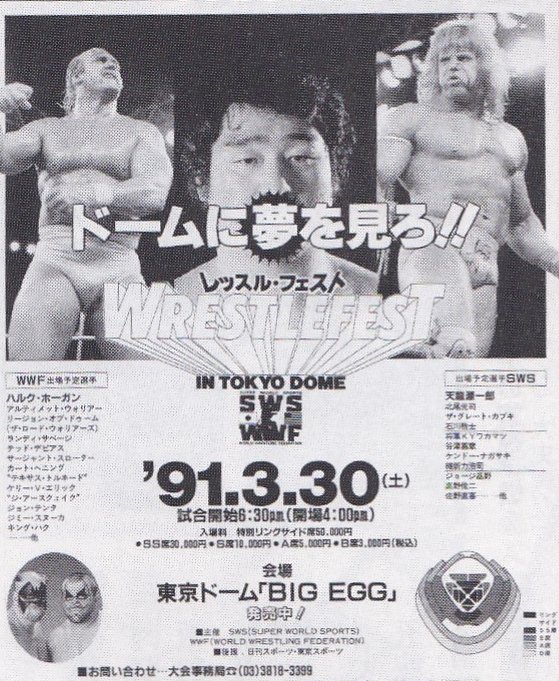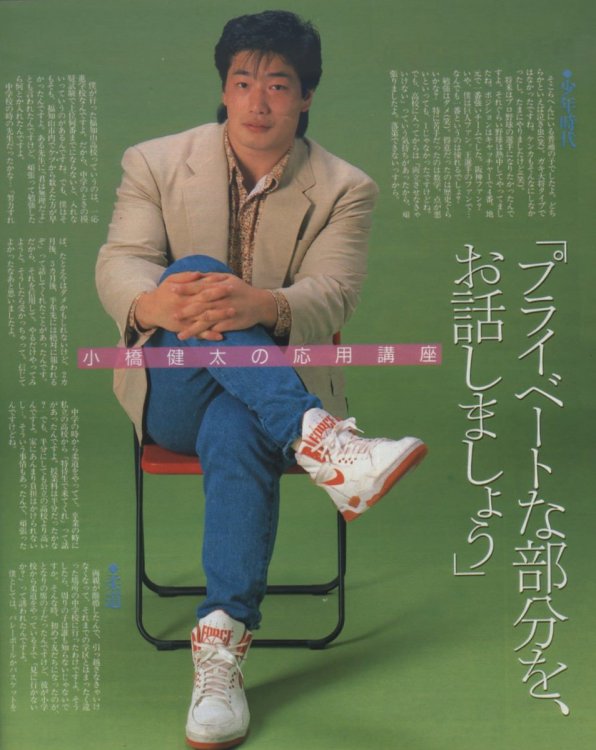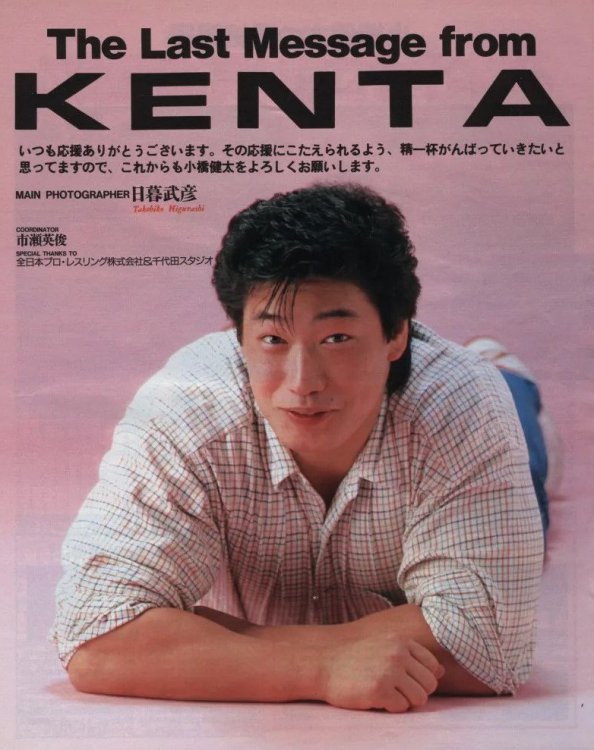-
Posts
422 -
Joined
-
Last visited
Content Type
Profiles
Forums
Blogs
Everything posted by KinchStalker
-
2019 FOUR PILLARS BIO: CHAPTERS 18-21, PART THREE (THE NIGHT THE PILLARS WERE BUILT) With nearly two million residents as of a 2020 census, Sapporo is Japan’s largest city north of Tokyo, and is the political, cultural, and economic center of Hokkaido, the northernmost of the Japanese archipelago’s five main islands. It became the first Asian host of the Winter Olympics in 1972 (and would have been so 32 years earlier, had the second Sino-Japanese War not forced them to relinquish the hosting rights to an event that never happened anyway). It was the first city that my hometown of Portland, Oregon established a sister city relationship with. It holds an annual snow festival. Sapporo has been familiar to puroresu since 1954, when the nascent JWA booked a three-night run that August. It’s seen its share of big shows and title matches in the decades since, from the Sharpe brothers winning the NWA World tag titles back from Rikidozan & Kokichi Endo in 1956 to NJPW’s two-night Summer Struggle just a few months before I wrote this. But like most cities in the world, it isn’t Tokyo, and building a loyal audience in a large but ultimately regional city is a difficult matter. In the summer of 1985, Masahito Hino opened what seems to have been a wrestling merch store in Sapporo called Ring Palace. He was to be the promoter of a UWF show at the Sapporo Nakajima Sports Center. This, however, put him in the crosshairs of the AJPW sales department, who harassed him for arranging an event to be held just one night before All Japan’s stop in Sapporo. It was a moot point, as it turns out. The show was set for November 25; the UWF’s final show would be on September 11. Almost three years later, the Newborn UWF selected Sapporo to host their second event. UWF Starting Over would draw 5,200 to the Nakajima Sports Center.1 One week earlier, All Japan had run the same building with a show headlined by Revolution and the Olympians duking it out for the just-unified AJPW World tag titles. They had drawn 4,400. AJPW wouldn’t work Sapporo again until the following July. Before a show that saw Tenryu & Hansen beat the Olympians for the tag titles, Baba held a talk event where he spoke directly to the crowd for two hours. Hino recalls how this gesture reflected an All Japan that sought to form a more direct audience with its fans, and by extension sought to puncture the atmosphere around professional wrestling that had made mens’ puroresu less approachable for women and children. They drew 3,800 that night, which was fifty more than NJPW had drawn two weeks earlier. According to Hino, while good matches had been held in Sapporo over the years, the impression that it wouldn’t hold great matches had prevailed; he recalls when an announced singles match between Akira Maeda and Bruiser Brody was cancelled, and notwithstanding the general opinion on Brody in these circles, that’s the kind of cancellation that can hurt a market. Meanwhile, AJPW would make incremental progress in the market by holding infrequent but consistent events. UWF’s Fighting Art show on October 25 was the top-drawing Sapporo show of 1989, but when AJPW returned for a televised date in that year’s RWTL, they drew a thousand more than they had last time. Those 4,800 certainly made the right call, as they were the first Japanese audience in a quarter-century to watch Giant Baba get pinned by a native wrestler, in a great, subversive match. It would be six years until AJPW drew under 5,000 again. The Nakajima Sports Center held four wrestling shows in 1990. NJPW was first, putting on a January 25 show headlined by a Vader/Chono singles match; they drew 3,860. AJPW returned on the 1st of June, as 5,250 came to a show headlined by a Jumbo/Kabuki vs. Misawa/Kobashi tag. A third and final UWF show in the Center came the following month, and 5,600 came to see Maeda/Fujiwara and Takada/Yamazaki matches. Finally, AJPW came back for a RWTL date on December 1. This show featured the second-ever Misawa-Kawada/Miracle Violence Connection match, as well as a novel six-man which saw the Funks team up with Andre the Giant to wrestle Stan Hansen, Danny Spivey & Joel Deaton. The show was quite likely dampened by the broken leg which had hospitalized Baba the previous night, but All Japan’s consistency in Sapporo was rewarded by an attendance of 6,100. Hino speculates that the dissolution of Newborn UWF might have helped AJPW’s Sapporo audience grow, though I’m skeptical that this was a significant factor; all three of its splinter promotions held Sapporo shows in 1991 and drew about 5,000 each. But despite NJPW drawing 6,350 on a July show headlined by Vader/Hashimoto, AJPW would draw the largest crowd of the year yet again, with a November 29 show headlined by the Misawa-Kawada/ Tsuruta-Taue RWTL match bringing 6,600 through the doors. On May 22, 1992, the three top members of Chosedaigun all made their Tsurutagun counterparts submit in a Sapporo six-man. [The formatting and font gives this away as a Weekly Pro page, but I cannot confirm the source issue.] Five months after All Japan’s previous stop in Sapporo, they would outdo themselves. The Chosedaigun/Tsurutagun six-man of 4/20/91 was already legendary, and the city was privileged to hold a rematch on May 22. A whopping 7,800 came to see yet another early-90s AJPW classic. Their annual RWTL stop on November 27 drew 6,450, with a show headlined by the Misawa-Kawada/Baba-Kobashi tournament match. Emboldened by three years of strong attendance, AJPW booked the Nakajima Sports Center for two consecutive nights: May 20-21, 1993. --- The 1993 Super Power Series tour would begin in Korakuen on May 14, but there would be a preamble. Weekly Pro Wrestling parent company Baseball Magazine (BBM) had purchased Korakuen shows from NJPW in 1986 and 1993, but this would be their first AJPW show. While he was “in charge” of the event, Ichinose was not there to cover it; he had been pulling double duty since the formation of JWP (which would lead to a commentary job on their WOWOW program), and was accompanying them on a trip to Saipan. Due to the special circumstances, Kawada’s first match against the Super Generation Army was not alongside Taue; rather, he wrestled Kikuchi in the semi-main, winning with a stretch plum. When the tour began, though, so did Seikigun (the Holy Demon Army).2 Debuting with a victory over Misawa & Kikuchi, Kawada & Taue symbolized their equality on this tour by alternating which member entered first and whose name was called first, night by night, on top of their entrance theme mashup. The latter had been seen in the Hansen/Brody and KakuRyu teams, but the alternating name order was novel, even if “Kawada & Taue” was always how the team was referred to by fandom and the like. The two Sapporo shows were dates 6-7 of the tour. AJPW would not beat the previous year’s attendance record, but they had not expected to. The first night would draw 6,100, and the second 6,400. According to Hino, 1,000 of those tickets were sold on the day/s of, and about 10% of the total attendance had bought their tickets at his shop. On the first night, Kawada & Taue defeated the Miracle Violence Connection to end the final AJPW World Tag Team title reign of what had been the definitive foreign team of the early decade in the promotion. Misawa & Kobashi, meanwhile, beat Hansen & Spivey in the semi-main. The second night was even more significant. After the Can-Am Express lost an All Asia #1 Contendership match against the Patriot & the Eagle the previous night, Dan Kroffat made up for it by defeating Fuchi for the junior title, and thus ending what will quite likely always be the final 1000+-day title reign in puroresu. Even this, though, would pale in significance compared to what followed. Photos from the four singles matches that built the legend of the Four Pillars. [Source: Weekly Pro Wrestling Issue #555, dated June 8, 1993 (photograph included in free preview of the issue’s archived digital copy)] Mitsuharu Misawa, Toshiaki Kawada, Kenta Kobashi, and Akira Taue all wrestled singles matches against the four top All Japan gaikokujin of the early 90s. All four would win. Taue was first, wrestling Danny Spivey in the first of three matches officiated by Kyohei Wada. Taue suffered a laceration under his left eyebrow, but he hit the nodowa otoshi to win his first singles match against Spivey, after four attempts. Next up was Kobashi, wrestling a former Triple Crown champion in Terry Gordy. Kobashi had already pinned Spivey on February 28, but had not beaten Gordy, just as Taue had beaten Gordy in a 1993 Champion Carnival match, but not Spivey. In just over nineteen minutes, he changed that. After a Baba-style neckbreaker drop didn’t do the trick, a moonsault did. A detail Ichinose notes is Kobashi’s clenched fist in the postmatch, which he appears not to notice at first. The fist pump before a moonsault was already a Kobashi trope by this point, and much later on, the so-called ‘Fist of Youth” would become part of Kobashi’s brand in another sense; just from looking at his social media (seriously, he ends like 40% of his tweets with 『いくぞー』!!) you can tell that he uses the gesture in his motivational speaking. Kobashi bowed to all four sides of the Nakajima Sports Center, and when he returned to the waiting room, he took questions from reporters and shook hands with all of them. Ichinose only gives Kawada and Misawa’s matches against Steve Williams and Stan Hansen a cursory mention, but the latter was Misawa’s third successful Triple Crown defense, coming off of his loss to Hansen in the previous month’s Carnival final. Above: Misawa at the 1988 wedding of Tokyo Sports reporter Soichi Shibata (right). Five years later, Shibata would be the first journalist to refer to Misawa, Kawada, Kobashi and Taue as the Shitenno (“Four Heavenly Kings/Four Pillars”). [This photograph was shared by Shibata himself on Twitter on the day of NOAH's 2021 Misawa tribute show.] After getting his law degree in 1982, Soichi Shibata became a reporter for Tokyo Sports. He worked for the publication for three decades until his 2015 retirement, and he has been mentioned earlier in these recaps. However, a Western puroresu fan is most likely to recognize him for over a quarter-century of commentary work for NJPW, which ended on the first night of Wrestle Kingdom 15 in 2021.3 Shibata was the first one to refer to Misawa, Kawada, Kobashi & Taue as Zen Nihon Shitenno, and he did so in his report on the May 21 show. Not every name thought up by a puroresu journalist took root, but some did. Ichinose claims credit for coining “Doctor Bomb” to name Steve Williams’ spinning powerbomb. When Taue began doing a chokeslam off the apron, the name he had come up with was “Nabiki Nodowa Otoshi”, but Weekly Gong’s name “Cliff Nodowa” was the one that stuck with fans. I need to get something out of the way now; shitenno is not a distinct term. It is a standard Buddhist cultural reference that had been invoked before in puroresu, and has been since. Trying to look deeper into the symbolism of the Four Heavenly Kings to see parallels to Misawa, Kawada, Kobashi & Taue, or perhaps even holding onto the term Four Pillars as hard as we in the West do (I’m thinking of OJ’s annoyance with the term, which he expressed in one of the GWE threads), would be a bit like Japanese fans of Western wrestling trying to determine which of the Four Horsemen were Pestilence, War, Famine and Death. In fact, the four men that the Pillars beat on that second night in Sapporo had themselves been called the foreign Shitenno of the period. And grumbling about whether Akiyama “deserved” to be a Pillar more than Taue is particularly silly; from what I understand, after Jun got his main-event push,the term gotsuyo (五強, “Five Strengths”) emerged, which is another Buddhist reference. Just because it’s a standard cultural reference, though, doesn’t mean that it didn’t take root in the domestic fandom, or that AJPW didn’t immediately run with it. In Misawa & Kawada's first Budokan main event as enemies, the Holy Demon Army double-teams the Triple Crown champion. "From the legend of Sapporo to the myth of Budokan. Four young people look at their dreams, embrace the future, and fight. This is the World Tag Title match. [...] Another new chapter in the history of King’s Road Pro Wrestling4 is about to begin.” Those were Kenji Wakabayashi’s words as the Nippon Budokan was bathed in green, orange, red and yellow for the first time. On June 1, Kawada & Taue held their first defense against Misawa & Kobashi; it would be the first of eight tag matches between the four over the next two-and-a-half years. Before the match began, Wakabayashi told Baba that he’d heard the media had already started to call the four the Shitenno. Baba, as Ichinose recalls, seemed to be trying not to shake with joy. Taue would powerbomb Kobashi to retain by pinfall in 29:12.
-
2019 FOUR PILLARS BIO: CHAPTERS 18-21, PART TWO For the second post of this batch, we will look at Kenta Kobashi’s arc in the early 90s. ------------ On September 7, 1990, Kenta Kobashi & Johnny Ace defeated the Fantastics to win the tournament for the All Asia Tag Team titles, which had been vacated in the wake of co-champion Shinichi Nakano’s departure from the company. Ace had worked three tours for AJPW in the late 1980s, but that summer he had signed an unusual deal to work fulltime for the promotion [Wrestling Observer Newsletter, 7/9/90]. Ace & Kobashi would enter the 1990 RWTL as a unit, and made their first successful All Asia title defense against the Wild Bunch the following January. Two months later during the Champion Carnival tour, they retained against the Southern Rockers. However, two days later Ace reportedly suffered an avulsion fracture to his left elbow when doing a moonsault on Cactus Jack in a midcard tag match. A second title defense against the Dynamite Kid & Johnny Smith had been scheduled for that tour, and Tsuyoshi Kikuchi was substituted therein; the #4 of the Super Generation Army took a diving headbutt from his idol to end the reign. As Ace made a handful of Stateside appearances which cast doubt on the legitimacy of his injury, from a WWF house show job in West Palm Beach to Col. Mustafa to a street fight against Terry Gordy at UWF Beach Brawl (which went to a double countout), Kobashi & Kikuchi unsuccessfully challenged the Can-Am Express for the All Asia belts in June. When Ace returned in July, he and Kobashi would win the belts back on the 8th before dropping them to the Wild Bunch ten days later, who in turn were transitional champions for the Can-Am Express to swoop in and beat eight days later. Many years later, Kobashi would admit in a book that he had been frustrated by how Kikuchi had been relegated to a fill-in partner. Two days after the All Asia loss, Kobashi teamed up with Misawa to wrestle Stan Hansen and Danny Spivey in Yokohama. While it was the semi-main event of a show in a major market, it would not be broadcast; between the Jumbo/Williams Triple Crown match and a JIP of two-thirds of a Kawada/Taue singles match, I guess Puroresu Newzzzzz cut into whatever time it might have otherwise gotten. However, Ichinose cites this match as a notable one for Kobashi. He recalls that it was a match “without any particular theme”, but Kobashi made it memorable when he broke rank, said “Hey, Stan!”, and went for Hansen’s injured left eye. Misawa followed suit, and soon enough Hansen had juice. Blood had become an unusual sight in the wake of the decree of tanoshiku puroresu (“fun/cheerful pro wrestling”),1 but sure enough, there it was. As for the “Hey, Stan!” part, Kobashi claims he was inspired by how Richard Slinger would greet Hansen like that. He couldn’t go “Hey, Jumbo!” to Tsuruta, but against a foreign wrestler he could drive a wedge in tradition and forego honorifics. Kobashi would pay for his disrespect, earning an assault by chair upon his lower back and submission by crab from Hansen. Deputy Editor Kiyonori Shishikura, who was in charge of the Weekly Pro match report that night, headlined it with “This is the most humiliating way to lose!” However, Kobashi was confident in his postmatch comments: “I was beaten up by Hansen, but I’m young, so all I have to do is train my body to withstand his attacks.” On August 24, All Japan held a b-show at the Sandanike Park Gymnasium in Kobashi’s hometown of Fukuchiyama. It was rare that the promotion came to this northern Kyoto town, as they had not done so since July 1987. It was that year that Kobashi had moved to Tokyo to start his new life, and he had not returned to Fukuchiyama since. Ichinose had asked Kobashi on several occasions if he would do so, but he always got the same answer. Kobashi had resolved not to return to the place of his birth until he had made it. Well, by the time they held that show Kobashi was a regular presence on AJPW television; in other words, he had made it. They rolled out a reliable Chosedaigun/Tsurutagun six-man that night, and in 30:06, Kobashi got the pinfall with a moonsault to Fuchi. The hometown boy bowed deeply to his fans in all directions. Next time he came back, he vowed to himself that he would be a top star.2 Kawada and Kikuchi help Kobashi back to his feet after a postmatch Hansen lariat on August 29, 1991. [Source: Weekly Pro Wrestling Issue #453, dated September 17, 1991 (photograph included in free preview of the issue’s archived digital copy)] Five days later, Kobashi tagged alongside Kawada for a televised (if JIP) tag against Hansen & Spivey. While he was not involved in the result as it was written, he had made it possible by shoving Spivey into the path of a Western Lariat that the gaikokujin had been holding Kawada in place to receive, allowing Kawada to get the pinfall. Despite being scheduled to face Kobashi at the Budokan show in six days, Ichinose recalls that the match started as if Hansen was ignoring his opponent. However, Kobashi’s work upon his arm redirected his attention, and Hansen would brutalize our orange boy. In the aftermath of Kobashi’s clutch save, Hansen would lariat him in revenge. Before September 4, 1991, Kobashi had wrestled Hansen five times in a singles context. The first time, at a February 1990 Korakuen show, he hadn’t even lasted long enough to get on the Cagematch matchguide, as he fell to a lariat in 4:08. Kobashi wrestled Hansen twice that July, losing a televised match at the start of the tour in 12:09 and an untelevised rematch in 11:34. At a Korakuen show the following January, he hadn’t even made it ten minutes. When he entered the Budokan arena that late summer night, the longest that Kobashi had lasted against Hansen was 13:41, in their Champion Carnival encounter on April 15. Kobashi DDTs Hansen onto the exposed floor of the Nippon Budokan on September 4, 1991. [I got this from a Japanese Yahoo! auction listing of photographs from this and another match that just happened to be active while I was writing this.] This time, it would take Stan twenty minutes to put him down. He’d started it in ruthless fashion, ambushing Kobashi with a Western Lariat as referee Joe Higuchi was still checking Kobashi’s person for foreign objects. Hansen hooked his leg for the pin but the match had not begun, and an argument ensued, but by the time Higuchi signaled to Yoshihiro Momota to ring the bell, Kobashi had recovered just enough to begin a roll to the outside. The match which proceeded would present an essential early Kobashi babyface performance, with him surviving two more lariats before the pinfall. They laid it out well enough that the Western Lariat’s reputation as a one-hit kill move was not subverted past credulity, but Kobashi’s perseverance and endurance were nevertheless what defined this match. Their next significant encounter, an untelevised Kobashi/Ace vs. Hansen/Spivey tag on October 24, saw them again mine the outside brutality that had marked their Budokan match, with Kobashi repeating the DDT-to-concrete spot which had consolidated the comeback he had earned then, and Hansen hitting Kobashi’s neck with three connected chairs. That would be the last time Kobashi worked alongside Johnny Ace for half a decade. Not that Laurinaitis would be any less of a presence on AJPW cards in the years to come, but starting with his 1991 RWTL entry alongside Sunny Beach, ol’ People Power would be booked alongside foreign talent until he and Kobashi reunited as GET in 1997.3 When the participants of the 1991 RWTL had been announced six days earlier, Kobashi was nowhere to be seen. This had been Baba’s call, as he was deeply hesitant about booking the 90kg Kikuchi in the tournament. However, Ichinose claims he insisted at a subsequent creative meeting that Kobashi & Kikuchi be added. Even if they had not even won the All Asia titles together, and even if Kikuchi would inevitably drag Kobashi down as far as the results were concerned, Ichinose maintained that fans would want to see them participate. Baba would acquiesce, and after Tsuruta defended his Triple Crown against Kawada in the main event of the October 24 show, Baba gathered the press to announce the last-minute addition of a thirteenth team. The team would only win two league matches, but they did so against teams that had held the All Asia belts that year. On November 28, they avenged their April loss to the Dynamite Kid & Johnny Smith with a Kobashi moonsault to Smith. On the final date, they would beat the Wild Bunch with a Kikuchi bridging German to Billy Black. Ichinose’s confidence in Kobashi & Kikuchi’s connection to the fans would be vindicated even before their first win. On November 21, they faced their Chosedaigun teammates Misawa & Kawada in a block match at the Osaka Prefectural Gymnasium. This match was mentioned earlier in the book for the Misawa eye injury, sustained during a bar fight with Kawada, that would officially (and extremely dubiously) be blamed on this match. What Ichinose did not mention, though, was that Osaka had been a difficult market for AJPW to attract large audiences. For some time, Osaka residents had clearly known they were playing second fiddle to Tokyo, and attendance had suffered. The November 21 show, though, saw the building filled to capacity. The Super Generation Army match must have been a significant factor in ticket sales. 1992 didn’t see Kobashi reach the highest echelon, but he did show some growth. On one hand, he won the same amount of matches in the Champion Carnival that he had the previous year—three; he got two freebies this year because Billy Black had to cancel last-minute for personal reasons and Taue got hurt—but on the other hand, the one match where he survived long enough for a time-limit draw was against Steve Williams. Two months later, the chase for the All Asia titles would end in Kikuchi’s hometown of Sendai on May 25. The Can-Am Express had held the belts for ten months, with three successful defenses against the Blackhearts, the Wild Bunch, and the State Police. But in a match that the hometown boy would call the best memory of his career, one which he knew had been rated the best match of the year in “some American magazine”, Kobashi hit the moonsault on Furnas to win in 22:11. At the end of the tour, Kobashi received his first shot at the AJPW World Tag Team titles. With Kawada challenging for Hansen’s Triple Crown in the main event, Kobashi was called up to team with Misawa against Tsuruta & Taue. One could bemoan the fact that the last match ever wrestled by a totally healthy Jumbo was arguably more about the relatively fresh Kobashi/Taue matchup than about him; then again, Taue needed a win, and against Kenta he got it. Like the Can-Ams before them, Kobashi & Kikuchi’s lengthy reign would only have three successful defenses; against Fuchi & Ogawa on July 5, against the returning Express on October 17, and against Akiyama & Ogawa on January 24, 1993. However, Kobashi is proud of this chapter in his career. He had always thought that the lower-ranked All Asia titles had had their “own charm”, and he was happy to elevate them alongside his friend. He recounts that the show-stealing January match had been particularly successful at this aim. Kobashi tries to keep Hansen in control on July 8, 1992. [Source: Weekly Pro Wrestling Issue #505, dated July 28, 1992 (photograph included in free preview of the issue’s archived digital copy)] In the meantime, Kobashi would manage once again to make it twenty minutes against Hansen. In a televised warmup match to Hansen’s Triple Crown defense against Taue, the #3 of the Super Generation Army. While he had fallen to the lariat in just under fifteen minutes during their Carnival match back in March, here Kobashi lasted just one second less than he had at the Budokan. Kobashi & Kikuchi would be split up for the 1992 RWTL. Rusher Kimura and Andre the Giant would work that tour, but neither would enter the tournament. Instead, Baba would team up with Kobashi, almost four years after he had worked alongside the then-rookie in Kobashi’s first title shot. Meanwhile, Kikuchi entered alongside Dory Funk Jr, for what would be his final stint in the tournament until he and Tamon Honda went 1-8 in 2010. While Kikuchi would get the same number of wins he had last year, Kobashi & Baba would place fourth, only losing to Misawa & Kawada and the Miracle Violence Connection. Between tours in March 1993, Ichinose conducted an interview with Kobashi, in which he asked him about “taking a step forward”. The journalist knew that someday, Kobashi would be the biggest star in puroresu; it was just a matter of when. But for all of Kobashi’s ambition, 1992 had seen him in what, on some level, seemed like a holding pattern. Kobashi responded that he wanted to “move forward with his fans”. This interview was printed in the Weekly Pro issue dated April 6, and in an excerpt, Kobashi discussed how he wished for his fans to forget about their daily worries when they saw him wrestle: how he wanted to “encourage them” through his fights. Ichinose asked Kobashi whether he believed a main-eventer needed charisma, to which Kobashi responded that he was unsure. Just as the interview ended, though, and as Ichinose was about to stop the cassette recorder, Kobashi said “it’s never a waste of time to think about charisma, is it?” Kobashi won four of his matches in the 1993 Champion Carnival, and went the distance against both the Patriot and Terry Gordy. A freebie due to Jun Akiyama’s early injury brought him to twelve points.
-
As for Akiyama's amateur pedigree, I was surprised to find that the JWF database has no records of him (and I checked both his legal and ring name). It could be a gap in their records, but if he'd been an Olympic alternate I am certain that he would have done well enough in collegiate tournaments to be on there. Edit: according to this he was a runner-up in the All Japan Student Amateur Wrestling Championship.
-
2019 FOUR PILLARS BIO: CHAPTERS 18-21, PART ONE I finished the transcription of chapters 18-21, whose 125 pages cover 1993 but make a lot of digressions. This continues to be a book that I cannot recap simply, but I think that what I’ve taken from it will be illuminating. This first post will set the table for the formation of the Holy Demon Army and cover the debut of Jun Akiyama. Ichinose held off on covering a lot of this stuff to streamline the narrative in Part Two, so this goes over a lot of the same ground, albeit from different angles. ------ On March 4, 1992, Akira Taue celebrates the first top title of his career, while Jumbo Tsuruta celebrates his last. 1991-2 were difficult years for Akira Taue. He had grown immeasurably whilst working alongside Tsuruta, and his performances against Kawada in their 1/15/91 and 4/18/91 singles matches had been encouraging. However, Tsuruta and Taue had also lost three tag title matches in 1991, with Taue being booed at the June 1 match against Hansen & Spivey. At year’s end, they were unable to win the Real World Tag League. Taue was the first partner who had failed to notch Tsuruta a RWTL win after two attempts; with Baba and with Yatsu it took him one try (though that’s two for Baba if you count the 1977 Open League), and with Tenryu it took him two. Taue finally won the AJPW World Tag Team titles alongside Jumbo on March 4, 1992, against the Miracle Violence Connection. Jumbo got the pinfall, but Taue had pulled his weight, and for the first time since the summer of 1990, when he had held the All Asia tag titles with Shinichi Nakano before Nakano’s departure for SWS, he had gold around his waist. [2021.10.25 addition: Ichinose later explains how Tsurutagun had earned this title match. For the first tour of 1992, Ichinose pitched a special gimmick to determine the #1 contenders, the New Year Three Team Tournament. Three four-member factions—Chosedaigun, Tsurutagun, and the "Foreign Army" (Hansen, Ace, and the Wild Bunch)—would have all their matches against each other in all configurations tracked, and the team with the highest winning percentage at tour's end would get the contendership. Ichinose admits that he doesn't know how effective it was, but the concept was his attempt to give even local events some modicum of weight in the storyline of the tour, as each would have 1-3 matches which counted towards this percentage.] In the Champion Carnival, Taue would only notch eight points in his block before a neck contusion and ankle ligament injury, suffered during an untelevised Jumbo/Taue vs. Kawada/Kobashi tag, caused him to sit out the rest of the tour and the expanded two-night AJPW Fan Appreciation Day afterward.1 At the end of the following tour, though, Taue pinned Kobashi in Budokan to retain in his first tag title defense. Toshiaki Kawada had received his first shot at the Triple Crown in the wake of Misawa’s nose injury. Likewise, Taue would challenge for Hansen’s belts during the Summer Action Series, where Tsuruta was out with an “ankle injury”. Like the Kawada match, as well as Misawa’s first Triple Crown shot in July 1990, Taue’s first challenge for AJPW’s top prize was held at a medium-sized venue as per Baba policy. Anyway, a buildup tag on a July 5 Korakuen show had seen Taue and Hansen square off, respectively partnered with Rusher Kimura and Billy Black. During this match, about half of which aired joined-in-progress, Hansen fractured Taue’s left orbital bone, dislodging his eye. (To this day, Taue says that when his eyes are in motion, “it’s like he’s only seeing out of his right side”.) However, perhaps due to the pressure that Tsuruta’s absence had brought upon the tour, Taue would not miss a single date, even though Hansen took the July 20 show off due to back problems. At tour’s end, at the Athletic Park Gymnasium in Matsudo, Taue fell to the Western Lariat in 14:41. As covered in my previous batch of posts recapping this book, Taue lost a #1 contendership match to Kawada on September 9, but postmatch comments suggested that Kawada had reached a certain respect for his rival. Eight days later, AJPW booked Korakuen for a 20th Anniversary show in between tours. This five-match card saw Taue team with Mitsuo Momota to go over Motoshi Okuma & Haruka Eigen in the third match, due to Giant Baba taking what would have been his spot in the main-event Chosedaigun/Tsurutagun main event. Alas, the show would best be remembered for the match in between. SUPER ROOKIE Above: On February 3, 1992, Giant Baba held a press conference at Senshu University to announce his signing of Senshu wrestling team captain Jun Akiyama. [Source: Weekly Pro Wrestling Issue #479, dated February 18] Jun Akiyama1 was born in Izumi on October 9, 1969. Not much about his family is disclosed, but we learn that, like Kawada, Akiyama’s first exposure to pro wrestling was through his grandpa’s television. He didn’t loathe wrestling like Kawada originally did, having pleasant memories of watching all the primetime wrestling there was, and he as so many others was struck by Tiger Mask’s rivalry against the Dynamite Kid. Akiyama was a swimmer until he entered Takaishi High School, at which point he switched to judo. However, the school’s wrestling coach invited him to train with them. By his sophomore year, he was a member. The early stretch of Akiyama’s Wikipedia biography, which cites a 2016 magazine of wrestler biographies, contains a recollection that his advisor, Shunji Shiraishi, had been trying to lead him and his friends towards the wrestling team from the beginning, as when they asked him to talk about the judo club he changed the subject. The wrestling team practiced far more than the judo club, but Akiyama stuck with it. Akiyama competed in the junior division of the 41st National Sports Festival2 in 1986, wrestling freestyle at the 81kg class. According to a PDF of 1946-2010 festival results, he would place third in the division, which was won by future Pancrase fighter Kazuo Takahashi. Upon his graduation, Akiyama enrolled at Senshu University and joined its wrestling team. As a freshman he shared a dorm with senior year teammate Manabu Nakanishi, about whom Akiyama has nothing but good things to say. Unfortunately, Akiyama would not see the same amateur success as his four-time national champion and Olympian roommate. A knee injury would derail his junior year, and the Senshu team would be knocked down a division. The early 1990s saw NJPW recruit several successful collegiate wrestlers. The aforementioned Nakanishi was joined by Hiroshi Nagata of Nittatsu University and Waseda’s Tsunemitsu Ishizawa. Riki Choshu’s increased backstage importance appears to have been the impetus, and Akiyama recalls that, while he wasn’t aware when it happened, the promotion had dispatched Hiroshi Hase as a talent scout. Akiyama was not as successful as any of those three. Although he would become team captain as a senior, his attention was divided by the shukatsu system of job-hunting. He was considering a job offer from an unnamed Osaka company, which planned to start its own wrestling team. However, another option arose one night in July 1991, when head coach Kenshiro Matsunami invited Akiyama to a dinner at the Capitol Tokyu Hotel. This was the first time Akiyama met Giant Baba. “He talked to me about wrestling, money, and all sorts of things, but the thing I remember most was, ‘Don't worry about anything, just come.’” Baba would meet with Akiyama’s parents and give a talk at his high school, in a rare amount of effort to gain a new recruit. Jun was not immediately swayed, and would continue to consider his job offer. His old high school advisor had suggested he look into pro wrestling, having held the dream himself in his youth, but Akiyama had never truly considered it. But after an interview with a top executive, the two happened to take the same bus back home, and Akiyama saw how much the salaryman lifestyle had worn this man down. He thought that he didn’t want to be like that when he was forty, and the experience compelled him to give pro wrestling a chance. On February 3, 1992, Akiyama’s signing was announced in a press conference at his alma mater. Not since Hiroshi Wajima had AJPW gone to such trouble to display a new member, and it made Baba’s high expectations clear. Akiyama’s training was apparently a smooth process. The grounding in ukemi4 that Baba considered paramount in the All Japan training pipeline usually took a trainee three to four months to master, but Akiyama had it down in less than one. About four months in, Baba would assign him to supplemental pre-show practice sessions with foreign wrestlers such as Johnny Smith. Such sessions did take place between fellow native wrestlers, but it was rare that a foreign talent would participate in the process; Akiyama suspected then that this was special treatment. Ichnoise points out that, up to this point, AJPW debut matches had followed one of three templates. The most common was a preliminary singles match; most start from the bottom, and Akiyama had figured that he would as well. For the select few who had been groomed to immediately become major players, All Japan had taken two paths. The first was a match against a foreign wrestler, usually a midcarder. Jumbo Tsuruta had debuted in Amarillo by going over El Gran Tapia, and his first AJPW match repeated this pattern against Moose Morowski. The second and much more common approach was a tag match alongside Baba against two gaikokujin. This had first been done with Anton Geesink in 1973, against the team of Bruno Sammartino and Caripus Hurricane (AKA Ciclon Negro). Although Tenryu had debuted in an Amarillo singles match the previous winter, his first AJPW match was a 1977 tag with Baba against Mario Milano and Mexico Grande. Hiroshi Wajima’s first matches were tags abroad alongside Baba, which were contemporaneously broadcast in Japan, although his debut match in AJPW itself was against Tiger Jeet Singh. Finally, Akira Taue debuted in a tag match with Baba against Buddy Landel and Paul Harris, on the first show of 1988. If the plan was to debut Akiyama at the 20th Anniversary Korakuen show on September 17, 1992, and they weren’t going to relegate him to a curtainjerker bout, they would have no foreign talent to book him against due to the show’s placement in between tours. The pressure was on to book a memorable match to mark the occasion, and though Ichinose could only go by Ryu Nakata’s word that Akiyama would be a good wrestler, he pitched a semi-main singles match between Akiyama and Kobashi during one of the secret creative meetings. Ichinose admits that he was inspired by NJPW’s Yume Kachimasu, a special show first held in 1989 that gave Young Lions the chance to wrestle veteran talent. Baba was quite reluctant, but despite the certainty that Akiyama would start his career with a loss, Ichinose would not be deterred, and the match was approved. Akiyama was told that he was debuting at the 20th Anniversary show two weeks in advance, and informed of his opponent two days in advance, but the outside world would not know about it until the show itself. I attached this photograph to the mention of Akiyama’s debut in my last recap post, but I need to discuss the moment it captured directly. Akiyama was highly praised for his performance at the time, and the match continues to be quite respected in the Western fan community as one of the best debut matches in wrestling history. However, it was not a genuine expression of Akiyama’s self. Akiyama strongly implies that the moment in the photograph, in which he “barks” at Kobashi on one knee after having taken a string of chops and kicks, was a Kobashiism that the two had come up with beforehand to “bring out Akiyama’s expression”. From the comments excerpted here, Akiyama will be the first person to tell you that the match was a Kobashi carryjob, and though they crafted a satisfying match, Akiyama knew that that hadn’t been the real him out there. In keeping with his superrookie status, Akiyama would work every date of the ensuing October Giant Series tour. Due to the odd-numbered roster of the time, Akiyama was being booked more consistently in his first tour than Satoru Asako and Masao Inoue, both of whom had debuted in the spring of 1991, or even twenty-year veteran Mitsuo Momota. Booked exclusively in regular and six-man tags, Akiyama would share the ring with most of the significant talent to work that tour. From the top native stars of Chosedaigun and Tsurutagun (Akiyama mainly worked as an unaffiliated teammate of the former, though he did work one six-man on the other side during the tour’s antepenultmiate show), to the foreign stars of today (Stan Hansen) and yesterday (Dory Funk Jr, Abdullah the Butcher), Akiyama worked with more big names in a single tour than most puro rookies do in their first two years. As the last-debuting AJPW wrestler to work against a relatively healthy Tsuruta, Akiyama took his backdrop for the pinfall on October 13; five days earlier, he had been “baptized” by the Western Lariat. All the while, Baba fed him high-calorie dishes, likely insisting that Akiyama be an ebisu as he had Kobashi. As covered in the previous post, Akiyama was thrust into Tsuruta’s spot in the 1992 RWTL after Tsuruta’s hepatitis struck. By his own recollection, Akiyama didn’t stop to think about it, and just did what he had to do. He felt he had no choice, which wasn’t helped by his feeling that he was, in a sense, Tsuruta’s understudy. (As mentioned in a much earlier post on this thread, Akiyama claims that he suspected that Tsuruta’s health would go south.) Akiyama & Taue would have a 6-3 record at the tournament before advancing to the finals. On a November 17 b-show, Akiyama won his first match by pinning the Eagle in a six-man. It was only his 22nd match, which by AJPW rookie standards was doing pretty well. He even got to win one of the tournament matches, as he pinned Kendall Windham with a bridging German suplex on November 21. However, hierarchy would rear its ugly head for all three of their tournament losses; Akiyama was felled by Hansen’s Western Lariat on November 20, by Steve Williams’ Oklahoma Stampede on November 27, and by Kobashi’s moonsault on November 30. On December 6, 1991, Akiyama was one of 15,900 Budokan spectators to witness the last RWTL show, in which Misawa & Kawada and Tsuruta & Taue competed. He could never have fathomed that, just one year later, he would take the place of one of those four at the same venue. On December 4, 1992, he had 16,300 eyes on him. Three months earlier, he had wrestled his first match, and twelve years later, he would headline the Tokyo Dome, but Akiyama states that this was the most nervous that he would ever be in his career. It was a match that was destined to be a deflating experience from the moment Akiyama took Tsuruta’s place, but he had a good showing in his 36th match. (Note that Misawa and Kawada were both putting over Yoshihiro Momota in the undercard on their 36th matches.) If Cagematch is to be believed, the 1993 New Year Giant Series tour was when Akiyama was first officially billed as a member of Tsurutagun. This tour would also give him his first title match, a shot alongside teammate Yoshinari Ogawa at Kobashi & Kikuchi’s All Asia tag titles. Finally, it would give him the platform to have some more singles matches, through the seven-match Trial Series. Like Kobashi at the start of 1990, Akiyama would go 2-5, with wins against Al Perez and Johnny Smith to punctuate losses to Misawa, Kawada, Hansen, Gordy, and Williams. The longest of these matches was against Kawada, at the Osaka Prefectural Gymnasium on January 26. Five days earlier, after a Taue/Akiyama vs Kawada/Kikuchi tag, Kawada had criticized Akiyama as a mechanically sound but inexpressive wrestler, not cut out for the elite. After pinning Akiyama with a powerbomb in 14:37, Kawada maintained his position: “You’ve got all these moves; now it’s time to learn to wrestle.” Kawada’s criticisms clearly were not spiteful. Four years earlier, when Ashura Hara’s dismissal had forced him to step up to the main event, Tsuruta had subjected him to a similar trial by fire. But Akiyama was cursed by his superrookie status, and though he commented after the Kawada match that he now understood that the “feeling that you put into each and every move” was the most important part of wrestling, he would be slow to implement this. Much later, Akiyama would admit that he had also been affected by the persistent criticisms in Ichinose’s Weekly Pro writeups, which stated, again and again, that Akiyama had shown “no color”. On March 11, one week after the end of the 1993 Excite Series, Ichinose interviewed Akiyama for the first time. This would be published in the Weekly Pro issue dated March 30, under the title “A Letter from the Spring Breeze”. Akiyama expressed his self-consciousness about his position. It appeared that the 1993 Champion Carnival would give Akiyama a chance to further grow as a wrestler. However, in the second match of the tour’s first date on March 25, Akiyama injured his right arm. He would not wrestle for two months, and would return to a much different landscape. A PARTNERSHIP OF RIVALS “I always hated pro wrestling. Really, I hated it. I wonder to myself why I fell in love with it so much. [...] I don't have any feelings of love or hate right now. But the fans still come back, so it must be attractive.” (Toshiaki Kawada, June 1992) The book continues to frame Toshiaki Kawada’s departure from the Super Generation Army as his own decision. Whether or not this is kayfabing the matter, Ichinose’s narrative lays out Kawada’s anxieties convincingly. In his February 28, 1993 postmatch interview with Ichinose, during which he stated that there was a “50/50 chance” that he would leave Chosedaigun, Kawada admitted that he felt pigeonholed by the success of the Super Generation Army in the media and among the fans. He expressed no resentment towards his teammates themselves, but he clearly felt he had gone as far as he could alongside them. Kawada also brought up his belief that wrestling had a three-year cycle. Ichinose points out that the Super Generation Army had formed in 1990, and Revolution three years before that. (You could take this back even further. Japan Pro Wrestling was formed in 1984. 1981 had seen three of the biggest foreign names in puroresu—Abdullah the Butcher, Stan Hansen, and Tiger Jeet Singh—change allegiances, on top of the IWE’s demise and its fallout. As for 1978...uh, I mean, that’s the year that Fujinami became a star, as well as when the IWE burned their bridge with Baba and got into what would be an even more asymmetrical partnership with NJPW. Not as great an example, but you get the idea.) While he brought up his three-year cycle theory, Kawada had openly worried about the potential staleness of the AJPW product as early as 1991. In an interview with the author after that year’s August 11 Korakuen show, after he and Tsuyoshi Kikuchi defeated the Blackhearts, Kawada said that a few shows that tour had not sold out, which made him nervous. As he would say in the February ‘93 postmatch interview, Kawada did not want to go back to the days when he would wrestle for fifty people. AJPW’s momentum insofar as box office was concerned had not yet stalled, but Kawada’s fears were not unfounded. Ichinose compares the first tours of 1992 and 1993 to demonstrate this, going by official statements. In 1992, All Japan held 19 shows; only two of these shows were “unmarked”, and 14 of the remaining 17 were not just full, but sold out. Meanwhile, the 1993 tour held 23 shows. 12 of them were sold out, and four were full, but this time almost a third of the tour’s events were “unmarked”. The greatest indictment was a comparison of the respective tours’ shows at the Osaka Prefectural Gymnasium. On January 21, 1992, a card headed by four Chosedaigun vs. Tsurutagun singles matches drew 6,150. On January 26, 1993, with a Kobashi/Taue main event, a Miracle Violence Connection tag title defense against Hansen & Spivey, and the Akiyama/Kawada trial match, AJPW only drew 4,100. Once again, Baba entrusted Ichinose with booking the 1993 Champion Carnival; this time, though, Baba lifted the two-block compromise that he had imposed upon the tournament’s revival two years earlier. Ichinose thought that he had done a good job, but complaints came early. On the first show of the tour, a March 25 Korakuen date, a Kawada-Williams match was the last of the three tournament matches. It went to a thirty-minute time-limit draw, despite a Williams backdrop hurting Kawada’s neck halfway through. After a Chosedaigun/Tsurutagun six-man tag on the following night’s untelevised Korakuen show, Kawada spoke to reporters while nursing his neck with an ice pack. He recalled how, in the 1992 Carnival, he had been forced to wrestle Williams just one day after Hansen in consecutive block matches, which had been difficult for him. He stated that he didn’t blame the powers that be for booking him against Williams to start the tournament, because they clearly needed to elevate someone. Ichinose took this comment as a reporter—none of the talent save for Baba knew of his creative influence—but he and the other reporters in the room were shocked by it. Ichinose compares it to Riki Choshu’s famous (if allegedly apocryphal) comment in 1982 that he “wasn’t Fujinami’s bait dog”. After Misawa won his tournament match that night against the Patriot, he responded to Kawada’s remarks: “There's a part of you, Kawada, that's not quite brave enough. If you're leaving, why don't you just say so? He can't make that final decision. He can do it if someone else does it for him, but he can't do it himself. It's always been that way.” The following night, Misawa and Kawada faced each other in a Kyoto tournament match, which Misawa won with an elbow in 22:00. At the April 12 show in Osaka, Kawada and Taue wrestled as members of opposing factions for the last time. It was on this show that Kawada announced he would leave the Super Generation Army, although he expressed gratitude for their support. Two days later, during a press conference held at a Nagoya show, Baba confirmed that he would be joining Taue’s team, and stated that he wanted the two to challenge for the tag titles. Kawada had requested one last six-man tag alongside Kobashi and Kikuchi, and in the semi-main of the tour’s final show (April 21, Yokohama), they wrestled Tsurutagun in a match that saw Fuchi sit down on a Kikuchi sunset flip attempt for the pinfall. By Kawada’s own admission, the match was uninspired. Afterwards, he asked Wada if he had counted a bit fast, to which the referee responded: “I think it’s good that your last match was so dull.”
-
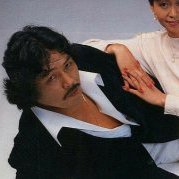
Comments that don't warrant a thread - Part 4
KinchStalker replied to TravJ1979's topic in Pro Wrestling
Fujinami didn't adopt the ring name with different kanji until he came back from the hernia, so I think it's him; sure, he's now wrestled longer under it than not, but he wrestled under his real name for the entirety of the Showa period phase of his career (that is, the stretch of his career when wrestling had the most cultural relevance). Kobashi also did his kanji change later on. -
NEW INFO ON EARLY IWE I've finished transcribing the next four chapters of the Pillars bio, and am currently sifting through the material to figure out the best way to distill and arrange it. In the meantime though, Igapro just posted a historical post with a couple new pieces of info on the earliest days of the IWE. I put my IWE history project on indefinite hold when I managed to get a copy of the Pillars book—and after Herr Sitemeister tweeted this, I fear that it may become my brand—but this shit is too good to keep to myself. I plan to eventually incorporate it into a rewrite of the first IWE history post It looks like Hiro Matsuda had ulterior motives during his short tenure for the IWE. He had been made director of the promotion upon its formation, and on top of making the merger with the flailing Tokyo Pro Wrestling happen due to his connection to Antonio Inoki, Matsuda''s link to Eddie Graham (who wasn't running Championship Wrestling From Florida yet, but was already involved in its booking according to the Hornbaker NWA book) made him an effective booker. (Note that I am using "booker" in the classical puro industry sense; a booker scouts and secures foreign talent to work a tour, while a matchmaker puts the shows together. It's possible that Matsuda was also the matchmaker, but the word "booker" is always used in the former context in these stories.) Graham himself worked on the IWE's first tour, and it was he who allowed the Danny Hodge NWA junior title defense against Matsuda to take place. As it turns out, Graham had Sam Muchnick's approval for all of this. Like Al Karasick, the Hawaiian promoter who sought to wrest control of the JWA from Rikidozan, Graham's ambition was to take over the IWE. Apparently, Matsuda was in his corner because he was disappointed in how his original plan to break from the sumo-inherited hierarchy of JWA puroresu in favor of an American-style freelance system had been abandoned. Graham applied on Kokusai's behalf for NWA membership, the plan being to become a stockholder and eventually oust Isao Yoshihara. However, the combination of Inoki's departure, TBS's cold feet in going ahead with a broadcast deal, and Kokusai's already large debts due to talent salaries led to Matsuda and Yoshihara's fallout over the handling of said debt, though it is unknown whether Yoshihara was aware that Matsuda had sought to betray him. The JWA would maneuver to acquire NWA membership that year, and whatever Muchnick's reasons for approving them instead, Graham would order Matsuda to withdraw and return to the States when his plans failed.
-
I can't find any direct answer on who made the call. It's clear that the superteam was necessary for hierarchical purposes; if Jumbo vs Tenryu is your main program, you need Tenryu to have a good chance of beating him in tag title matches as well as singles, and they just were not going to book Kawada that strong. That being said, the original card for the 1988 Budokan show that became the Bruiser Brody Memorial Night came to the fan-voted dream tag of Jumbo/Brody vs. Hansen/Tenryu, and I see the decision partially as a way to make at least half of that a reality.
-
Bix said I should start a blog to make this stuff easier to organize, and I agree. I was going to put this off until I had some more content in the pipeline, but fuck it. From Milo To Misawa will start with an expanded and rewritten Jumbo biography, and the first part is already live. Eventually I would like to transfer all the content here onto the blog, but the Jumbo redux will honestly be the main attraction for a while. I probably need a break from the transcription game because, while pushing myself to complete the remaining 400 pages before the New Year is a bad idea, it's a seductive bad idea, and forcing myself to revisit what I now consider to be my worst work on this thread will be ample distraction. However, I will post other new content to this thread when I have some, at least for the foreseeable future.
-
2019 FOUR PILLARS BIO: CHAPTERS 10-17, PART EIGHT This will be the final post covering the second half of part two of the Pillars book. --------- Tarzan Yamamoto’s suggestions to make Korakuen Hall a priority of the company had paid off. By early 1992, these events were selling out so quickly that AJPW began to cater to those who weren’t fast enough, through a postcard lottery system for a certain number of seats. “I CAN’T REST ANYMORE” Above: after Mitsuharu Misawa was legitimately injured in a Korakuen six-man tag on July 21, Toshiaki Kawada was substituted in his place. Three nights later, a local promoter threatened to lower his payment for the AJPW show he had purchased if Misawa took the night off, and Misawa was pressured to work the rest of the tour in a sling. On the March 4 Budokan show, which reportedly set an attendance record of 16,300, Misawa lost his third shot at the Triple Crown to Stan Hansen. Six weeks later, in the final match of the Champion Carnival, he lost to Hansen again. The August 22, 1992 Budokan main event would be Misawa’s fourth Triple Crown shot, his fifth singles match against Hansen. Yet, it would also be Hansen’s fourth defense of his titles. In his comments before the match, Misawa vowed that he would not challenge for the titles for a full year if he lost again. One month earlier - on the July 21 Bruiser Brody memorial show in Korakuen, to be exact - Misawa had led Chosedaigun in another six-man tag against Tsurutagun. Jumbo Tsuruta was absent from the tour, for what was then reported as a reaggravation of an old leg injury, so they had the advantage going in. However, this was derailed when Taue legitimately injured Misawa’s shoulder (specifically, Misawa suffered a dislocated acromioclavicular joint). Kawada was substituted in to restart the match. Misawa would take the following night off, a show in Tsushima; however, when the local promoter for the July 24 Izumo event threatened to dock his fee for the show due to Misawa’s absence, Baba asked him to return. At that point, Misawa would later recall his feeling that “he couldn’t rest anymore”. Misawa would work the last seven dates of the tour in a sling. At the very least, he would get a little rest before his title shot, as the Summer Action Series II tour would start nearly three weeks after the Summer Action Series I tour had ended on July 31. However, his title match would only be his third of the tour. Above: Misawa hits Hansen with the hardest elbow he has to win the Triple Crown Heavyweight Championship. [Source: Weekly Pro Wrestling Issue #511, dated 9/8/1992] Ichinose recalls arriving at the Budokan on August 22. What struck him was that the long, long line that he had seen upon his entrance was not for the ticket office, but for advance ticket sales for the next AJPW Budokan event: the promotion’s 20th anniversary show on October 21. Ichinose was genuinely moved by how far the promotion had come since the bleak aftermath of the SWS departures. As you likely know if you’re reading this, this was when Baba finally put the belts on Misawa. Ichinose’s remarks on the match aren’t particularly revealing, though he was as surprised as anyone by the elbow strike finish. Misawa's postmatch comments frame the match as being as much his battle against his own body as that against Hansen. ROAD TO THE 20TH ANNIVERSARY Above: On September 9, 1992, Kawada and Taue face off in a #1 contendership match to be Misawa’s first challenger. In an August 28 interview with the author during an Osaka show, Misawa admitted that he had not yet proven to himself that he deserved to be the champion, a statement which was in keeping with remarks he made after his victory over Hansen. Misawa’s first defense was scheduled for the October 21 Budokan show, but a #1 contendership match in Chiba on September 9 would determine whether his challenger was Kawada or Taue. In his postmatch comments on August 22, when asked which of those he would rather face, he responded “...you're waiting for me to say Kawada, aren't you? Then write that down. I think Kawada is the one worth wrestling at this point.” There was, however, hesitation baked into his remarks. Meanwhile, Kawada stated at the 8/22 show that, if he won the contendership match, he wished to use a separate locker room before their title match, because he believed that he would need to isolate himself from his partner to have a match that would satisfy their audience. Misawa disagreed, as at the August 28 show he responded that the two could save their feelings until the day of the match. It was a difference in ideologies; Misawa believed that they did not need to take this measure because they had a smooth relationship, while Kawada believed that it was because they had a smooth relationship that he had to do this. Ichinose recalls how Revolution had gotten their own tour bus to reinforce their separation from the main unit of the roster, and how in the faction’s earliest days as just a tag team, Genichiro Tenryu and Ashura Hara traveled separately to smooth their transition from rivals to partners. Ichinose also notes that Kawada’s belief that distance was necessary was sympathetic to Baba’s own sensibilities. After all, the “ippon hanamichi”, the single entrance stage and ramp, was a development in the presentation of professional wrestling that Baba despised and kept out of his product for as long as he lived; whether post-Baba All Japan was to continue the tradition of having wrestlers enter through the first and third doors of the venue would be one of the irreconcilable differences between Misawa and Motoko which brought about the NOAH exodus. Ichinose became anxious that Kawada might not give a comment if he were to win the Chiba match, so he decided to interview him at the b-show in Nagano on September 8. It was here when Kawada gave further insight into his anxieties. In their interview, which would be published in the Weekly Pro Wrestling issue dated September 29, 1992, Kawada admitted that he was worried that, if he won the #1 contendership and then challenged Misawa, then that would be the end of it. He would still be a member of the Super Generation Army. He didn’t see where the story could go from there. In short, he was afraid that, ultimately, “nothing would happen”. The following night, Kawada wrestled Taue as planned. This match appears to have been (Ichinose doesn’t mention it) the debut of Kawada’s signature entrance theme, the original composition “Holy War”; this was after two years of using “The Last Battle”, a minute-long piece of music from the anime adaptation of motorbike racing manga Bari Bari Densetsu. As for the match itself, Kawada won in 18:46 with a stretch plum. In his postmatch comments, Kawada declined to comment on his thoughts about wrestling Misawa, proving Ichinose’s hunch correct; instead, Kawada was interested in expressing his gratitude that he and Taue got to wrestle the main event of the last show of the tour. Both of them had worked hard, and he hoped that they could both make it to the top. Above: Jun Akiyama debuts at the 20th Anniversary show in Korakuen. [Source: Weekly Pro Wrestling Issue #515, dated October 6, 1992] After a September 17 Korakuen show to celebrate the actual 20th anniversary of the company, which saw the debut of Jun Akiyama as well as a unique Chosedaigun/Tsurutagun six-man with Giant Baba tagging alongside Tsuruta and Fuchi, the 20th Anniversary Giant Series tour began with another Korakuen show on October 2. 10/21/92 As has already been established, the seventeen-date tour ended at Budokan. While not contemporaneously broadcast in full, it was a relatively early example of an AJPW show that we know was professionally taped in full, as it would be broadcast many years later. Besides the main event, the most interesting match was the semi-main event. While it was a six-man tag with mostly old and/or limited performers, the Baba/Hansen/Dory vs. Andre/Jumbo/Gordy match was positively received when announced due to the twist of trading Hansen and Tsuruta. Ichinose claims credit for the idea. In his recollection of the match itself, Ichinose points out a “mischievous” detail: Baba’s use of the Mongolian chop against Andre, which recalled Andre’s NJPW/WWF feud(s) with Killer Khan.[1] Kagehiro Osano’s 2020 Jumbo biography features claims from Masanobu Fuchi that one of the plans for this match’s finish was to have Jumbo finally pin Baba. However, they settled on having Tsuruta finally go over his teacher Dory. Kawada’s request for a separate waiting room had not been granted until this last show. From the start of the event, he had declined all interviews, though Akira Fukuzawa predicted that he would be very talkative in the ring. Before his Mexican excursion, Mitsuharu Misawa had wrestled Toshiaki Kawada four times in a singles context. He had won all four matches: the first three by pinfall, the last via submission (single-leg crab). That had been on October 18, 1983, almost exactly nine years before this match. Above: various photographs from Misawa and Kawada's first singles match in nine years. Thirteen minutes into this match, a spin kick gave Misawa a concussion. This match too would see Misawa battle himself, and he would admit that he could not remember the second half of it, or even the precise point at which his memory faltered. Misawa would also admit in postmatch comments to NTV interviewer Shigeru Kaneko that he didn’t feel like he had won the match. The copy for Weekly Pro’s feature on the match, in what may have been the first AJPW special issue printed by the publication, read “The Door of Dreams”. Their coverage read that this match, or perhaps more accurately, the fact that Misawa and Kawada could have had that match without the heat of rivalry to draw upon, had opened such a door for a new era of professional wrestling. And yet, the match would not be chosen for Tokyo Sports’ Match of the Year, which instead went to Kawada’s June 5 title shot against Hansen. Whether or not this was influenced by Misawa’s attitude towards the ceremony, Ichinose cannot confirm. POSTSCRIPT Above: Misawa & Kawada win the Real World Tag League on their third attempt together. This photograph may have been a candidate to be the cover photo for the Weekly Pro Wrestling issue covering the tournament final; however, in an indictment of the disappointing year-end show, Tarzan Yamamoto instead decided to give the cover to new UWF International signing Naoki Sano. This photo would instead be featured on the cover of a calendar feature (or included calendar, I don't know) in the last issue of the year, dated for the first two weeks of 1993. This section of the book ends with light coverage of the next four or so months, and the picture of stagnation they painted. With Tsuruta’s post-tour hospitalization, Taue was partnerless as the 1992 RWTL approached. While Fuchi, Mighty Inoue, and Rusher Kimura were seen as options, Ichinose and Yamamoto recommended that rookie Jun Akiyama be called up instead, to establish him as a valuable future asset. Baba hesitated but eventually agreed. Taue & Akiyama reached the finals, where they were defeated by Misawa & Kawada. The match itself was decent, and Ichinose’s Weekly Pro recap was favorable on those terms, but Yamamoto’s commentary in an editorial forty pages earlier was harsh, writing that “[the year-end Budokan show] scored zero as an entertainment event”. As Tsuruta’s absence continued into the new year, the product remained stale, and by late February, Kawada’s dissatisfaction was visibly bleeding into his performances. After the Excite Seres' Budokan event on February 28, in which he had wrestled Hansen, Kawada was frank with Ichinose: “It's boring. It's boring for me, it's boring for you. For them, it's like watching the sequel of the same movie over and over again. They can see what's coming, and it's not interesting. If I were a customer, I wouldn't want to see it again.”
-
2019 FOUR PILLARS BIO: CHAPTERS 10-17, PART SEVEN “WHEN HE FIGHTS LIKE THAT, HE’S BETTER THAN MISAWA” Ichinose cites a handful of 1991 matches in the context of Toshiaki Kawada’s efforts to develop his own style. The earliest of these is his Champion Carnival match on April 6 against Jumbo Tsuruta, a match whose finishing stretch hinged on Kawada’s persistent kicks to Tsuruta’s face. After winning in decisive fashion, Tsuruta was nevertheless encouraging of Kawada. “When he fights like that, he’s better than Misawa.” On July 6, during a Misawa/Kawada vs Tsuruta/Ogawa tag match in Yokosuka, Kawada was injured by Ogawa’s step kicks (Ichinose reports it as a broken left orbital bone, though in the broadcast one sees a bloodied mouth). Two weeks later, Kawada faced Taue in their first singles match in three months, which broadcast as a joined-in-progress clip of approximately the last ten minutes. Much of this match saw Kawada fight with “primitive striking”, before finishing the match with a choke sleeper hold after a powerbomb kickout. After this match, Kawada made a comment that Ichinose considers reflective of the wrestler he was becoming: “I wonder if wrestling is not about techniques. Sometimes, you get better results when you can’t execute your moves.” When Kawada was called up to challenge for the Triple Crown in Misawa’s place, though, he tried a different approach. Ichinose’s match report noted that Kawada moved away from the kick-heavy approach he had been developing, in favor of repeated use of strangulation techniques. In a November 9 interview with Ichinose, Kawada stated that he mixed up his approach because he wanted to minimize his mistakes, feeling that Tsuruta would be able to read his moves and neutralize him if he went to the kick well. But to paraphrase Kawada, he only ended up strangling himself. Eight months later, Kawada received his second shot at the Triple Crown. On June 5, 1992, Kawada challenged Stan Hansen at Budokan. Almost exactly two years before, Kawada had wrestled Hansen in a Sapporo squash match. That match had also seen Kawada adopt a kick-based approach early on, though everything had gone wrong for him when he tried to counter an apron suplex with an O’Connor roll. In 5:03, was pinned after a Western Lariat. The Budokan match would see him last four times as long. In contrast with 10/24/91, Ichinose writes that Kawada succeeded in expressing his style and philosophy in this match. Kawada’s wrestling throughout the match was most certainly not about techniques, taking it to Hansen with a strike-heavy approach. Hansen responded in kind, as Hansen is wont to do. While Kawada stated after the match that “Hansen was not the man he wanted to fight”, as “he didn’t like to fight foreigners”, Hansen’s meat-and-potatoes approach satisfied Kawada. “It meant that he had been accepted, or rather, forced to accept himself. Hansen places the NWA United National title belt upon Kawada's shoulder after their June 1992 match. [Source: Weekly Pro Wrestling #399 (dated June 23, 1992)] As Hansen left the ring, Kawada went after him while selling the damage he had sustained. When he finally caught up to Hansen, he offered a handshake, which Hansen took. Just then, Kawada collapsed, and Hansen responded with a respectful gesture, lightly placing one of his Triple Crown belts—the NWA United National title, the secondary singles title which had chiefly been held by Jumbo Tsuruta and then Genichiro Tenryu in the thirteen years before the Triple Crown unification—upon Kawada’s shoulder. "When I fought Hansen in Sapporo, I felt that I wasn't worthy. To be able to fight Hansen at the Budokan was unthinkable in the past, so I guess I wanted to go toe-to-toe with him. No other foreign wrestler had ever responded to me in that way, and that's why, after the fight, I wanted to go see Hansen. I hadn't thought much of Hansen before that. I hadn't had a good image of him since I was a new apprentice, because he knocked me down by a lariat when I came in to stop a brawl, but when he fought me head-on at the Budokan, I was grateful.” When he recovered, Kawada called an ambulance to further sell the effects of the match. His comments in a June 10 interview with Ichinose make it clear that, by this point, the expression of accumulated damage had become a focal point of Kawada’s performances, comparing his efforts to “convey the pain of a wrestler” to a television audience to how a cooking show may attempt to convey the smells and tastes of the dishes. During his third Triple Crown reign, Hansen would successfully defend his belts against three of the future Shitenno: first against Misawa in March, then the Kawada match, and finally against Taue in July. This led some to say that “the four pillars were raised by Hansen”, but in The Sun Rises Again, a 2003 book published for the Japanese market, Hansen claimed that he wasn’t trying to do so consciously. He was trying to protect his spot and hold them down, but they kept getting back up.[1] -------------- And now for something a little different. This doesn’t directly pertain to this narrative, but I think it’s a valuable piece of context for this era of AJPW. PRO WRESTLING NEWS Above: AJPW commentator Akira Fukuzawa interviews the Dynamite Kid in a comedic segment from an unconfirmed episode of AJPW TV. Fukuzawa’s pet segment Pro Wrestling News was a controversial staple of early-90s AJPW television. On April 18, 1989, Jumbo Tsuruta defeated Stan Hansen to unify the NWA International Heavyweight, PWF Heavyweight & NWA United National titles to create the Triple Crown Heavyweight Championship. Upon his victory, Tsuruta was interviewed in the ring by a Nippon TV presenter making his debut for AJPW television: Akira Fukuzawa. Fukuzawa would continue to make appearances in this capacity until April 1990. When longtime commentator Takao Kuramochi stepped down to work behind the scenes at Nippon TV, Fukuzawa would take his place...just as AJPW was moved to the 12:30am Sunday timeslot. Fukuzawa was an inexperienced commentator, and his early performances definitely showed it, but where Fukuzawa would shine was a segment developed after the timeslot change: “Pro Wrestling News”. The stated purpose was to communicate extratextual information such as match results, wrestler comments, and brief introductions to new foreign talent. The earliest appearance of the segment that I could find was on the July 23, 1990 episode. It’s played mostly straight, appearing to cover Yatsu’s mid-tour departure, establish the also soon-to-depart Great Kabuki as Tsuruta’s new tag partner, and briefly touch on Misawa. Even in this first go-around, though, Fukuzawa was reading their quotes in what seemed to be vocal impressions. In the next episode’s segment, though, Fukuzawa went even further. In a segment addressing Danny Spivey’s mid-tour departure, Fukuzawa went off-script and added his own comment (something along the lines of “I caused a lot of trouble for all of you. I'm fine now, I just want to get out of here!”) in an approximation of a foreign accent. In the coming months, “Pro Wrestling News” would stretch further into comedic interview segments with foreign wrestlers. On the October 14, 1990 episode, Fukuzawa asked Abdullah the Butcher for his thoughts on the company’s new tour bus. In an episode I could not find on YouTube but from which I found the header screenshots on a Japanese blog, Fukuzawa interviewed the Dynamite Kid about his attempts to learn Japanese, to which Dynamite responded with phrases in a manner that the blogger compared to actor Yusaku Matsuda. Fukuzawa’s irreverent approach was controversial. There were some fans who found it disrespectful of pro wrestling, and that disdain could be seen among both Fukuzawa’s colleagues (when once forced to host the segment in Fukuzawa’s absence, co-commentator Kenji Wakabayashi openly stated his contempt for it) and the wrestling industry itself (NJPW’s Hiroshi Hase threatened violence upon Fukuzawa[2]). However, Ichinose notes that “Pro Wrestling News” was popular with the younger audience that AJPW was catering to in the early 90s. On the first episode of 1991, in the wrestling equivalent of “if you don’t buy this magazine, we’ll kill this dog”, Fukuzawa vowed that he would take a moonsault from Kobashi if the program did not draw a 10% viewership rating by the end of the year. He would eventually walk back on this due to the program having gotten a 10% rating for a segment, but they did show growth. The average rating was in the 3-4% range, but the February 10, December 8, and December 22 shows drew 6.7%, 7.0%, and 8.2% respectively. Around this time, “Pro Wrestling News” even had its own set built, although this would eventually be scrapped for a travelling approach. When the timeslot cut to thirty minutes took effect in March 1994, the segment ended with a skit. In what may have been a farcical reference to the 1960 assassination of Japan Socialist Party chairman Inejirō Asanuma, a crazed fan stabbed Fukuzawa in the chest. Fukuzawa said “I knew this day would come” as he fell to his death...before someone offscreen yelled the Japanese equivalent of "Cut!", upon which Fukuzawa broke character, got back up, and walked out of the room with the rest of the crew.
-
2019 FOUR PILLARS BIO: CHAPTERS 10-17, PART SIX CHANGED PLANS Above: A Tsuruta elbow shot during a six-man tag on October 14,1991 fractured Misawa’s nasal bone. While forced to work the following night’s match, he was written off the rest of the tour in kayfabe when Taue reaggrevated the injury. Toshiaki Kawada was substituted for Misawa in the scheduled October 12 Triple Crown title match, which Tsuruta won decisively. After the submission loss of September 4, 1991, Tsuruta seemed to be on a downswing heading into his scheduled October 24 Triple Crown defense against Misawa. (Ichise recalls writing in his 9/4 match report that it seemed to be a point of inexorable decline for Tsuruta, which he would later consider negligent of him after the following tour proved him very wrong). Meanwhile, during the Giant Series tour, Misawa seemed to have recovered from the subluxated shoulder he had suffered during the July 26 AJPW World Tag Title match against the Miracle Violence Connection. However, these plans would be derailed in Osaka on October 14, during a Misawa/Kawada/Kobashi vs. Tsuruta/Taue/Ogawa six-man. Chosedaigun won this match in 27:30 with a Kobashi moonsault to Ogawa, but about seven minutes earlier, Tsuruta fractured Misawa’s nasal bone with an elbow shot. Although Misawa was forced to work the following night’s Korakuen show with a bandaged nose against doctor’s orders, he would be written off the rest of the tour with an end-of-match angle. This match, a Misawa/Kawada/Kikuchi vs Tsuruta/Taue/Fuchi six-man, saw Taue rush in and pinch Misawa’s nose after he broke up a Tsuruta powerbomb pin to Kikuchi. Kawada was substituted for Misawa in the Triple Crown match. SOMEDAY HE IS GOING TO HIT BACK Above: An injury to Misawa’s right eye caused him to miss a couple dates of the 1991 RWTL tournament. While AJPW stated that it was inflicted during his November 21 tournament match against the team of Kenta Kobashi & Tsuyoshi Kikuchi, Misawa actually acquired it later that night during a real-life altercation with his own partner. [Source: Weekly Pro Wrestling, Issue #467 (dated December 10, 1991)] Misawa & Kawada entered the 1991 Real World Tag League as one of two teams representing the Super Generation Army, alongside Kobashi & Kikuchi. The teams would cross paths in a televised match on the November 21 Osaka show, the fourth tournament match for both teams. With a Tiger Driver pinfall on Kikuchi in 18:51, Misawa & Kawada left the show continuing their four-match win streak, and Kobashi & Kikuchi left continuing their four-match loss streak. Misawa & Kawada were scheduled to wrestle Rusher Kimura & Mighty Inoue the following night in Takamatsu, a slam-dunk win if there ever was one. However, Misawa arrived at the venue with his right eye blackened and swollen shut, while Kawada was nursing his right knee. The party line was that an elbow attack during the Kobashi/Kikuchi match had reaggrevated an old wound on Misawa’s right eyelid, and while this was incongruous with the match as it had occurred, the people who would know the truth were tight-lipped, and so reporters had no choice but to report the announcement at face value. But eventually, this kind of stuff comes out. After the Osaka show, Misawa and Kawada hit up a bar in the city, accompanied by a crop of younger wrestlers and ring crew. Kawada happened to notice that Keiichi Yamada—that is, Jushin Thunder Liger—was a fellow patron. Yamada, who had lost the national high school wrestling championship to Kawada ten years before, had remained cordial with him. He had even attended the September 4 Budokan show with his wife. Misawa was hostile to the notion of commiserating in this way with a wrestler from a rival promotion, at least at this point (he would later become drinking buddies with Hayabusa), and things escalated when Kawada said that he’d go home in that case. To which Misawa responded with a punch. It is true that Kawada considered Misawa “a small oasis in hell” during their days at Ashikaga. Misawa was light on him in the sense that he was the only senior classmate who did not hand any of his personal chores off to Kawada. However, as Ichise’s digression here makes clear, this did not mean that Misawa’s overall treatment of Kawada was all roses. Misawa himself admitted in his autobiography that he had beaten Kawada in high school for “slandering” him, and when Kawada joined All Japan, Misawa responded to a similar incident by kicking Kawada’s knee on the stairs as he cowered, which horrified a witnessing Fuyuki. Kawada had never struck back, but tonight, he wanted to set an example for the younger wrestlers in the room. As you can see, he got him good. Kawada left and returned to Tokyo, while Misawa went to an Osaka hospital. The following day or thereabouts, Kawada went to Misawa to apologize, and Misawa’s response was apparently gracious. It would be dishonest to peg this as the point when the relationship between the two began its inexorable shift; they tagged together for another fifteen months, and they continued to duet on karaoke into the following year. But it’s a story that reveals a lot. The previous year, when Misawa had been sidelined with a knee injury, the team lost their scheduled match against Giant Baba & Andre the Giant by forfeit. This time, though, special measures were taken, and the Kimura/Inoue match was rescheduled to take place on November 26. This kept Misawa & Kawada in the running, at the cost of having to pull double duty; after winning their originally scheduled tournament match against the Dynamite Kid & Johnny Smith, M & K only had a Kobashi/Kikuchi vs. Hansen/Spivey match’s worth of time to rest before going back out to wrestle the ex-IWE job team. “THE ACE OF GLASS” The rate of injury which had impeded Misawa’s growth during his days as Tiger Mask had not gone away when he unmasked, and the back half of 1991 laid that out plainly. It was likely during this period when Misawa garnered a derisive nickname in certain corners: the ace of glass. On January 4, 1992, Tokyo Sports held their annual awards ceremony. Misawa and Kawada were both absent. In fact, Misawa would snub the ceremony for four consecutive years. Ichise dismisses a theory that Misawa boycotted the ceremony in retaliation for having lost the 1990 MVP award to Atsushi Onita; no, it was the “ace of glass” narrative. Ichise scoured Tokyo Sports All Japan coverage from the second half of 1991 in search of this term, and while it was never used, a reporter in the December 27 issue wrote that he didn’t understand why the Misawa/Kawada vs. Kimura/Inoue RWTL match had been rescheduled. Misawa wasn’t the kind of man who would turn on Tokyo Sports because they had given him an honorable mention instead of the top award in 1991, but this was something that could have set him off. Soichi Shibata, the head of Tokyo Sports’ AJPW team, recalled that while he himself didn’t feel this way, there were colleagues who felt that Misawa was unsuitable for the MVP award after this. Misawa would eventually play ball with them again, but he would not win the award until 2007. However, Weekly Pro Wrestling held an annual, fan-voted set of awards known as the Pro Wrestling Grand Prix. Concurrent with his Tokyo Sports boycott, Misawa won the Grand Prix’s MVP award in three consecutive years. His first win in 1991 quite surprised the publication’s staff, as their NJPW coverage was clearly what sold more units (as determined by the sales of both issues with NJPW cover stories and NJPW special issues). But for the core fans who bothered to submit the Grand Prix voting postcards, All Japan was clearly a subject of attention. In February 1992, when Ichise asked Misawa for his response to winning the award, Misawa made an overt statement of defiance towards Tokyo Sports, stating that it was a greater honor to be chosen by the fans than by the papers.
-
2019 FOUR PILLARS BIO: CHAPTERS 10-17, PART FIVE Finally, KinchStalker has come back...to his history thread. I was fairly satisfied with how the last batch of posts came out, for which I held off until I transcribed roughly a hundred pages. The wait on your end was longer, but the posts were more cohesive for it. I’ve decided to stick to that approach: recapping this book in eighths, essentially. The only drawback, besides time, is that this method leaves me with a ton of material to process. More posts covering this range of the book will come very soon, but I need a little more time. Part Three of this book spans roughly 250 pages across seven chapters. If the photographs throughout are any indication, the range of time it covers starts in 1993 and ends in the spring of 1995, with the 1995 Champion Carnival and the Weekly Pro Wrestling Tokyo Dome show – the culmination of the publication’s influence upon the puroresu landscape. WADA Short-tenured referee Nobuo Kawasaki [L], whose illness would change the life of a ring crew employee [R]. Kyohei Wada entered the workforce after graduating junior high, hopping across various odd jobs until finding employment with transportation company Towa. This brought him to a part-time job as a member of AJPW’s ring crew, starting in the winter of 1972. It wouldn’t be until 1974 when an opportunity for something more arose. Nobuo Kawasaki, a Chuo University law graduate who appears to have been the son of the head of Towa (I was suspicious of this, but this is a very obscure story and I combed through what little text his Showa Puroresu minibio had with RomajiDesu as well as DeepL to check that this term was being correctly translated), had debuted as a referee in August 1973. However, he was struck by illness a little over a year later and never returned.. It must have been after this that Baba noticed Wada, who displayed his agility and grace of movement as he danced to the radio while performing his duties. Wada accepted Baba’s offer, and was trained by AJPW head referee Joe Higuchi and wrestler Masio Koma. Trainee Kazuharu Sonoda, who had joined the company in July and would debut in January, filled in as undercard referee until Wada’s debut for the year-end NWA World Champion Series tour. Early AJPW continued the JWA’s practice of hiring foreign referees alongside natives. This began with Japanese-American referee Wally Tsutsumi of 50th State Big Time Wrestling, who had received the opportunity to visit the country of his parents’ birth after having refereed Giant Baba’s September 1972 Honolulu match against the Sheik. Ken Farber, George McCreary, Richard Moody, Danny Pleches, and Jimmy Tanaka all worked for All Japan in this capacity before the promotion acquired the services of ex-JWA referee Gerry Murdock. Starting with the 1973 Black Power Series, the first AJPW tour after the JWA’s closure, Murdock worked for them full-time. For the first 18 months of his career, Wada was below both Higuchi and Murdock. However, after the first date of the 1976 Summer Action Series, a stomach ulcer ended Murdock’s career, at least in Japan. [2022.06.27: I now know that this was a cover story, and that Murdock had been fired. I have been unable to uncover why, though.] The Great Kojika and Akihisa Takachiho filled in for a few matches, but Kazuharu Sonoda eventually filled in as a third referee for the rest of the year. I do not know whether Sonoda or Wada was above the other in this hierarchy; Sonoda had technically been hired first by AJPW proper, but Wada was two years older and had worked with the company longer. In any case, All Japan would finally settle on the two-referee system of Higuchi and Wada as 1977 began. The 1980 hire of Kisimasa Sakurai would put somebody underneath Wada at last, but he only lasted one year in the business, and with the in-ring retirement and subsequent shift of Mr. Hayashi in 1982, Wada would once again languish in a #3 spot. Wada considers Higuchi to have been his greatest teacher, although in an excerpt from his autobiography, Wada admits that he was slow to appreciate Higuchi’s approach. He thought it strange that Higuchi was “almost motionless” when the wrestlers he was working with were both standing. However, Wada eventually realized that this was deliberate; when wrestlers were engaged in matwork, Higuchi moved to and fro as he engaged the audience with big gestures. Still, Wada’s work embodied a generational reaction to Higuchi. The most memorable incident of Wada’s career before his promotion to co-lead referee is a great display of how. At some point in the early 80s, Wada was refereeing a match with Rocky Hata. Hata lost his temper and attempted to throw Wada out of the ring, as foreign talent had done to Higuchi so many, many, many times…only for Wada to recover by performing a tiger feint (better known to Western readers as a 619). With Hayashi’s transfer to AJW in 1986, and Tiger Hattori’s return to NJPW alongside most of JPW, AJPW had three referees by the start of the Jumbo/Tenryu feud: Higuchi, Wada, and Akihiko Fukuda, who had debuted on March 31. That summer, Baba decided to promote Wada to a co-head referee position for native vs native matches; Ichinose doesn’t frame it this way, but I wonder if he was influenced by Tiger Hattori’s work in the AJPW vs JPW matches of the previous two years, which his refereeing had served better than Higuchi’s ever could have. Wada notes that he and Tenryu hit it off over their similar philosophies on wrestling. However, in keeping with Tenryu’s attempts to not harm AJPW’s business in his departure to SWS, he did not attempt to invite Wada to join him, instead taking 1988 debutant Hiroyuki Unno. When the Chosedaigun/Tsurutagun feud took shape, Wada claims that Higuchi himself handed that off to Kyohei because he himself couldn’t work those matches. With this setup, the book goes into an interesting digression about the six-man tags of the time, and Wada’s role in helping them. With the addition of Yoshinari Ogawa to Tsurutagun in February 1991, the factions now each had four members. However, the possible configurations were limited by the need for Misawa and Tsuruta to work every one of these tags for customer satisfaction. On top of this, Wada had to pay attention to the crowds of provincial shows, as big fans from the Tokyo and Osaka markets would often travel to b-shows. He recalls times when he would recognize fifty faces from the previous show, and advise the main-eventers to mix things up for that night’s tag, often by doing the opposite of what they’d done the night before. Mind you, all of this had to be done without breaking from the foundation of the house style. There were unwritten rules to these matches that followed Baba’s ideals, and these were a clear manifestation of what we would come to know as oudou/King’s Road, even if that marketing term still hadn’t come about yet. These ranged from the general pacing of these matches – hot start, cooloff in the middle, hot finish – to Baba’s strong preference for variation and escalation rather than repetition in the layout of high spots. If a move only got a 2-count earlier in the match, Baba did not believe that it should be used for the finish, or even really a false finish. Ichinose credits this feedback, relayed to the wrestlers by Wada, with inspiring them to develop broader movesets, specifically citing Misawa’s myriad elbow strike variants as an examples. Finally, as you might expect, by this point the preference for pinfalls was well-established in company philosophy, with the “2.9 count” emerging as a staple of these matches. Wada was essentially the conductor of these moments, which demanded that he count “as if he were dancing”. The nearfall would become such a staple of the “slippery-slope matches” in years to come that Shitenno puroresu eventually garnered the nickname “2.9 puroresu”. But even in 1991, Wada recalls being concerned that the finish of the September 4, 1991 AJPW World Tag Team title match, in which Misawa made Tsuruta submit with the facelock he had debuted against Fuchi in May, would disappoint the crowd. FAN ENGAGEMENT Multiple screenshots of a camcorder recording of a “symposium” with Misawa on November 8, 1991. These talk events were one way in which AJPW catered to their new breed of fan. As covered in the previous major post, 1991 was the year when AJPW began to cater to a peripheral demographic who engaged with their product through the prism of idol culture, most notably reviving the Champion Carnival tournament to give their new favorite wrestlers opportunities to work in a singles context. Chapter 14 partially covers side events tied into this marketing approach. These ranged from photo-ops and meet-and-greets (such as one held on Hinamatsuri) to talk events called “symposiums”. (The latter seems to have originated with Genichiro Tenryu, who held a Revolution Symposium at the September 15, 1988 Korakuen show.) Photo-ops became a perk of joining All Japan’s fan club; members who arrived at shows early had a brief window of time where they could be escorted into the locker room by Ryu Nakata, who would snap a photo of them with whoever they requested. In mid-June, AJPW embarked on the costliest bit of fan engagement yet: a six-day, four-night tour of Hawaii with Misawa. Twenty-six lucky gals got to go on this trip, on which Ichinose tagged along as a reporter and photographer. He recalls the sobbing in the lobby of Honolulu International Airport as these fans said goodbye to Misawa, at which Misawa “seemed confused”. A TRIP TO AMERICA Photographs taken by the author during a September 1991 scouting trip of the United States with Misawa and Fuchi. From September 12-24, 1991, Misawa and Fuchi were in the United States for a scouting trip. Ichinose accompanied them as a reporter-photographer. After starting in Dallas, the group would visit Tampa, Memphis, Philadelphia, and New York City. They happened to have left on the same day of Chris von Erich’s suicide, and when they received the news from Japan they rushed to the memorial event, held about 100km from Dallas. The above left photo, with Misawa and Fuchi alongside Fritz and Kevin von Erich, Doris Adkisson, and Richard Slinger, might be the first photographed interaction between the von Erichs and AJPW talent since WCCW’s transfer to NJPW in 1985. During their time in Memphis, Fuchi insisted that they stop at Graceland, which Misawa indulged dutifully. Ichinose goes into a digression about how, while he tagged along with Misawa on many a karaoke night during his time reporting for AJPW,[1] they never sang Western music.[2]
-

[1988-05-27-NJPW] Tatsumi Fujinami vs Riki Choshu
KinchStalker replied to Superstar Sleeze's topic in May 1988
Type II. It was discovered when Inoki was 39; he felt the change when he was in Dubai in the spring of 1982, and after catching a fever in Korea he went to his family doctor. They did bloodwork and his glucose level was 590, over five times normal. Inoki recalls his binge eating habits of old in a 2010 article; by his own account he always felt that no food should be left uneaten, so eating ten bowls of ramen in one sitting or downing a whole bottle of sake was normal for him. The doctor advised retirement, but Inoki went on a diet and underwent a natural healing regimen to lower his glucose to 180, and returned to the ring just 44 days after his previous match with a 1:37 squash against Scott McGhee in June. Insulin injections were against Inoki's ideals, so after he was discharged from the hospital he opted for an ice water bath to make his muscles twitch and consume his blood sugar. The doctor was aghast, as you might imagine. -

[1988-05-27-NJPW] Tatsumi Fujinami vs Riki Choshu
KinchStalker replied to Superstar Sleeze's topic in May 1988
Kayfabe reason was a leg injury, yes, but the real health concern was diabetes. -
Basically, Kimura was shaken by his loss to Fujinami in the December match; he'd been able to take Fujinami to a DKO draw back in 1980, but was decisively beaten here. So, he was a desperate man, and things got ugly at the 1/2 match, which was ruled a no-contest after it was found that Kimura had loaded his supporter (with this) for the Inazuma leg lariat. Their rematch the following night saw Fujinami disqualified in a sub-5:00 brawl. A blowoff match on 1/14 had unlimited time and no count-out stip, with even the springs removed from the ring to make it harder; to top it off, Umanosuke Ueda was made the special guest referee, as the now-babyface had enough experience working dirty to call the match straight down the middle. Fujinami put Kimura away, and the belts were vacated. Their paths didn't really cross until the intergenerational feud angle later that year, which saw them reconcile. In early 1988, they ended the nine-month period (which started six days after the upset match which is the subject of this thread) that the IWGP tag titles spent in ex-UWF hands, and would hold onto them for six months before a loss to Saito and Choshu. Unless you count Heisei Ishingun (by which point Kimura wasn't a major player anyway) they were never really rivals again; Kimura wanted to wrestle him in his retirement match, but Fujinami was unable to make this happen and he sent Nishimura in his stead.
-

[1987-01-02-NJPW] Tatsumi Fujinami vs Kengo Kimura
KinchStalker replied to Loss's topic in January 1987
There's a very important note I need to make; the match result was overturned and ruled a no-contest when it was found that Kimura had loaded his leg supporter for the Inazuma leg lariat. -

[1988-10-19-NJPW] Antonio Inoki vs Riki Choshu
KinchStalker replied to Jetlag's topic in October 1988
Inoki kept his blade taped to the inside of his trunks, and it cut Choshu when he put his arms around Inoki's waist for that suplex.- 3 replies
-
- Antonio Inoki
- Riki Choshu
-
(and 3 more)
Tagged with:
-
2019 FOUR PILLARS BIO: CHAPTERS 10-17, PART FOUR (EARLY SHIFTS IN HEISEI PURORESU AND ITS FANDOM, THE 1991 CHAMPION CARNIVAL, AND AJPW FAN APPRECIATION DAY) Issue #429 of Weekly Pro Wrestling. (April 16, 1991). With sixteen extra full-color pages in the middle of this issue, originally intended for coverage of the SuperWrestle In Tokyo Dome event but made moot by the SWS ban, the magazine decided to print two eight-page profiles for Kenta Kobashi and Megumi Kudo, the latter of whom won out for the cover photo. This profile was a prominent example of Kobashi’s marketing as an “idol wrestler”, which catered to a notable peripheral demographic that All Japan was attracting at the time. 1990, as Ichinose sees it, was a turning point. Not only were there so many new promotions formed in what turned out to be the twilight of the bubble period, but there was fragmentation on a stylistic front as well. In the old, binary era, fans were partially attracted to puroresu because AJPW and NJPW (and once, the IWE) were similar enough that one could evaluate how strong they believed their respective wrestlers were under a common if ultimately hypothetical measure. But at the dawn of Heisei puroresu, the paradigm shifted so radically that this no longer interested fans. Put more directly, Atsushi Onita and Nobuhiko Takada were playing such different games that to ask which was 'stronger' was irrelevant. The most important thing would become a promotion’s ability to provide a unique yet consistent product, and in that respect All Japan was ahead of the curve in the retool it had undergone. (“If you believe that you can provide a dish worth the price of the ticket, people will come to the venue for the taste. If it is judged that the taste is not good or the taste is not consistent, the audience will naturally slow down.”) The year marked another oft-overlooked change, as it was then that New Japan streamlined its touring model. From the beginning of puroresu, small provincial shows had formed the connective tissue of national tours which lasted 3-4 weeks or more, but NJPW broke away from that formula, shifting to a one-to-two week tour model focused on major cities. While Ichinose is ambivalent about whether All Japan’s fidelity to tradition was a good thing–it would have helped their business to follow New Japan’s lead, that’s for sure–it did keep the company connected to rural markets. On July 27, Misawa received his first shot at the Triple Crown, which had been vacated after Terry Gordy’s overdose. In his first singles match against Stan Hansen, he fell to the Western Lariat. The match took so much out of him that he couldn’t make it all the way back to the dressing room, and had to sit down in the same aisle where fans were heading for the exit. He was surrounded by dozens of children, teenagers, and women, all concerned for his well-being. As Ichinose saw this, he heard a photographer from another publication wondering aloud why Misawa was so popular. The popularity of the Super Generation Army itself represented a shift. Traces of idol culture had been seeping into wrestling for nearly two decades at this point. Mach Fumiake, an aspiring singer who had lost in the final round of TV audition program Star Birth!! to Momoe Yamaguchi, pivoted to pro wrestling with her 1974 debut for AJW, and gave the promotion a wave of new fans and a direction they would follow further with the Beauty Pair, itself influenced by womens’ musical theatre troupe the Takarazuka Revue (as laid out in this fascinating blog and podcast). Mimi Hagiwara, who had actually seen some success as an entertainer, would join AJW in 1978 and pioneer the “idol wrestler” proper. It wasn’t just a joshi thing either, as all of this was contemporaneous with Wakadaisho-era Jumbo Tsuruta, whose sensitive public image endeared him to women and children (while it somewhat alienated the core demo of mens’ puroresu). But there was, in Ichinose’s view, something special about the group which began to flock around Chosedaigun. As he puts it, this new breed of fan engaged with their work through a self-projection distinct from the standard emotional investment of wanting “your guy” to win. The original apparatus of idol culture, the idol singer industry, may have begun its decline by this point, but its footprints could be traced in unexpected places. Ichinose draws a fascinating parallel between the Super Generation Army and Oguri Cap. Originally named Hatsuratsu, he was “a third-rate racehorse of mediocre pedigree”, born with his right foreleg turned outward and unable to stand without assistance. Despite this, the horse debuted on the racetrack in 1987, and through its four-year career became “the horse of the fans”. Oguri Cap’s story resonated with many a person who had come from rural backgrounds to work in the city, though writer Hiroshi Iwamaru opines that the emotions that he stirred in his fans “can probably only be understood by those who lived through his time”. Most pertinent to Ichinose’s point, Oguri was the leading figure in attracting women to the racetrack; the “Oguri Girls”, as they were known, would carry plushes of the horse and even sometimes cheered his stablehand. Oguri Cap retired in early 1991, after winning the Arima Kinen for a second time. Ichinose recalls the show in Toda on March 25, 1991. Before the show itself even started, he heard a “yellow cheer” (Japanese expression) from the crowd as Misawa and Kobashi walked through the arena to get back to the dressing room after their workout. As he wrote in his Weekly Pro recap, he momentarily thought that boy band Hikaru GENJI had shown up. [3] (This is the starting point of a journey that would eventually bring us to Misawa, Kobashi & Kawada covering boy band SMAP on New Years’ 1998, and to NOAH appearing on idol group AKB48’s television program a month after Misawa’s death, due to the Kobashi crush of member Asuka Kuramochi.) Baba was still out with his femur injury, but three months into his absence, attendance had not seen any significant decline. Ichinose points out AJPW’s late-night Sunday timeslot on Nippon TV, which it had been fully shifted to in the spring of 1990 (although in the Osaka, Hokkaido, Aichi, and Fukuoka markets, this had already happened two years earlier). VCR was an option for some, of course, but for fans still of schooling age it was a difficult program to stay up late to catch. So while television had an “overwhelming influence” on the way people learned about All Japan, this periphery demographic was incentivized by the inconvenience to attend live events. And yet, the difficultly in accessing the product fanned the fervor of this new breed of fan even more. "Somewhere along the line, they found the Super Generation Army. These were not heroes forced upon them by someone else; these were their own personal heroes who were not widely known…[whose stories] made them forget their drowsiness and their everyday lives.” If All Japan wanted to take advantage of this by showcasing each of these new fans’ heroes in a singles context, it was in their interest to bring something back. The Champion Carnival tour branding had never changed, but the original purpose of a singles tournament had been abandoned after the 1982 iteration. Ichinose notes in retrospect that Baba might have been motivated to do so to keep Stan Hansen and Bruiser Brody, who had teamed up after Brody and Buck Robley turned on Jimmy Snuka for losing their rematch against the Funks, from having to wrestle against each other. (I would also point out the pressure Nippon TV was putting upon the promotion to gradually phase out Baba as the ace, since Baba had won the last two iterations of the tournament.) But at the time Ichinose, who used to plan his own Carnival tournaments in his notebooks during class, was frustrated by the change. Since he’d been working for Baba in this capacity, he’d “poked his back” every chance he got to try to bring the format back. But now, Baba recognized the needs of this shifting fanbase, and agreed to Ichinose’s suggestion, albeit with the compromise that the round robin would be held in a two-block format. And so it was that, months before their traditional competitor held the first iteration of the G1 Climax, AJPW brought back the Champion Carnival tournament for the spring of 1991. Ichinose himself was tasked with drafting the Carnival’s roster, blocks, and schedule, but the process would be a bit more complicated than his high school fantasy booking. He had to consider what matches should be held on television tapings. He had to consider what matches he wanted to put wrestlers in on dates when they weren’t competing in their Carnival block. He had to keep the schedule as “flat” as possible, spreading out not just the marquee matchups, but the block matches of each respective competitor as well. But the most important thing to Baba was the main event, as it would ultimately be what satisfied customers. Ultimately, only three of the 20 tournament dates would hold block matches as the main event: Tsuruta vs. Taue on March 29 in Nagaoka, Misawa vs. Kobashi on April 5 in Takamatsu (an untelevised match where Misawa used his Tiger Driver ’91 once more to win–albeit in such a safe manner that the only real difference from the standard Tiger Driver was that Misawa landed on his knees–before putting it on ice for three years), and Hansen vs. Misawa on April 6 in Osaka. They was so sparing on this because Baba believed that for most block matches, the skill gap was too great to reliably craft a satisfying main event. So, the remaining 17 dates would end with regular and six-man tags. The key to Ichinose’s booking would be a man who wasn’t even in the Carnival proper: Tsuyoshi Kikuchi. On a March 3 Korakuen show, a mid-tour date of the previous Excite Series tour, Kikuchi was once again a curtainjerker, going over Richard Slinger at the start. It was there, though, that Kikuchi expressed his desire to Ichinose to wrestle in the main event, which on that date was a Misawa/Kawada/Kobashi vs. Tsuruta/Taue/Fuchi six-man. As Ichinose notes, Kikuchi’s wish was not one of “self-satisfied ambition”. He simply wanted to excite the audience, and Ichinose would grant his wish. Kikuchi participated in 13 of the 17 non-block match main events on the Carnival. Most remarkable about this was that, as the tournament blocks neared completion, Kikuchi would wrestle in five consecutive main events from April 11-15. On April 16, when Jumbo Tsuruta and Stan Hansen faced off in the Carnival final, Kikuchi received a shot at Fuchi’s junior title. Ichinose goes so far as to call Kikuchi “the main character” of the 19th Champion Carnival. As the Carnival progressed, something interesting happened within the pages of Weekly Pro. The full-page ad that caused SWS to ban Weekly Pro. On February 13, 1991, SWS officials contacted the advertising office of Weekly Pro parent company Baseball Magazine Sha Co., Ltd. The issue dated February 19, which hit shelves twelve days earlier, had printed a full-page advertisement for the SuperWrestle in Tokyo Dome show on March 31. This had not been purchased by SWS, whose relationship with the publication was quite fraught, but by the promoters of the venue itself. One would think this would be the first step towards a thaw in relations, but a printing error instead froze relations completely. Specifically, the ad copy “ドームに夢を見ろ!!” (“Dream in the Dome!”) had shifted downward from its place in the original layout, so that 夢 (“Dream”) covered Tenryu’s mouth. The publication went so far as to show SWS the original layout, but the promotion remained convinced that deliberate sabotage had occurred. On February 15, a “Notice of Refusal of Interviews” arrived via express mail. This was bad for Weekly Pro because they had already arranged for their issue dated 4/16, which would be their first to be produced after SuperWrestle in Tokyo Dome, to print with sixteen extra full-color pages to cover the event. The staff improvised a solution to salvage the issue. These pages would be dedicated to two eight-page profiles spotlighting a pair of rising stars: AJPW’s Kenta Kobashi, and FMW’s Megumi Kudo. More pages from Kobashi's Weekly Pro profile. Ichinose took charge of Kobashi’s section, and deliberately modeled it after content that one would see in an idol magazine. This ranged from studio photos of Kobashi in casual clothes, to an interview which touched on his favorite foods, his first love, and his views on marriage, to even a palm reading. Ultimately, Kobashi would lose the battle for the cover photo to Kudo. Kudo was the first joshi wrestler to have an entire Weekly Pro cover to herself since Dump Matsumoto in February 1988, but in a decision which initially bewildered Ichinose, Tarzan Yamamoto selected a picture of Kudo posing with her eyes closed. The general feeling amongst the staff was that it was “too much of a joke”, but Ichinose acknowledges that Yamamoto was a master at such subversive marketing: “He presents readers with a sense of discomfort, and makes them stop and wonder what is going on. Then, he makes them pull out a copy of Shukanpro from the shelves of bookstores and convenience stores. It can be said that he devoted most of his energy as an editor-in-chief to that momentary game.” He ends this passage by recalling Kobashi’s first Weekly Pro cover, the August 1, 1989 issue which captured him with Tsuruta after his breakout match on July 15. On that cover, too, Kobashi’s eyes were closed. Just a coincidence, perhaps, but Ichinose remembers also being initially baffled by that decision, and momentarily wondering whether it was more than coincidence, before concluding that “to make us think like that [was] the essence of Yamamoto’s magic.” For his part, Yamamoto would write glowingly of the Kudo cover in one of his post-Weekly Pro books, claiming that she was a like a “typhoon” that saved Weekly Pro and sank SWS. The Carnival tournament concluded on April 16, as Jumbo Tsuruta defeated Stan Hansen to win for the second time. While his 1980 Carnival victory over Dick Slater had been blighted by the unshakeable impression that Slater had been used as a proxy for Terry Funk, who had been in the tournament and whose defeat would have certainly given Tsuruta a greater rub (they had gone to a time-limit draw in their Carnival match, which had been their first singles encounter since their 1976 classic), the conclusion of this tournament had no such asterisk. Two nights later, at the Nippon Budokan, the tournament winner and Triple Crown champion defended his belts against Mitsuharu Misawa. That wasn’t all that was worthy of note during that event. The first match would see the Budokan debut of future Super Generation Army member Satoru Asako, a loss to Isamu Teranishi. It was after the fourth match that the date of Baba’s scheduled return to the ring–June 1–was announced. In the sixth match, Kobashi defeated Danny Kroffat despite working with a rib injury (his eighth and ninth had separated during the Carnival). In the seventh, Akira Taue finally defeated Toshiaki Kawada, albeit by countout. In the semi-main, Hansen & Spivey got the tag titles from the Miracle Violence Connection, avenging their loss in the RWTL final. At the end of the show, when Tsuruta retained his titles, the “Zen Nippon” chant which had been heard in Baba’s 30th Anniversary show returned, alongside the expected “Tsu-Ru-Ta, Oh!”. Two days later, AJPW would hold a Fan Appreciation Day event in Korakuen. The Fan Appreciation Day, a concept borrowed from the Nippon Professional Baseball events held in November, had originally appeared in All Japan back in 1974. That year, on July 21, the company booked Yomiuri Field for what was essentially a meet-and-greet with Baba and the Destroyer, which 7,000 fans attended. It wouldn’t become an annual thing, but the Fan Appreciation Day was brought back in this form several times over the next decade, always at the field of the team for which Baba had once played. The 1983 iteration, which was just two days before Terry Funk’s first retirement, brought 10,000 fans. However, the Fan Appreciation Day was shelved indefinitely in 1985, partially due to the 1984 iteration only drawing 2,000 fans, but also because it was deemed inappropriately heartwarming for the atmosphere of the product during the AJPW vs JPW program. But on April 20, 1991, the tradition would be revived, albeit in a different form: a proper wrestling event at Korakuen. At the time, AJPW priced seats at their Korakuen dates to move. As opposed to some promotions which charged as much as 10,000 yen for seats, AJPW sold the special and reserved seats at 5000 and 4000 yen respectively. On Fan Appreciation Day, though, this would be knocked down to a flat fee of 3,000. Before the first match, a charity auction was held, and this combined with the discounted seats suggested a low-stakes exhibition show. It certainly seemed that the Super Generation Army was in rough shape. Kawada had been unable to return to the dressing room without assistance after his match at the Budokan against Taue, Kobashi was working with injured ribs, and Misawa was worn down from a singles tournament and subsequent title match. And yet, in his postmatch comments in the Budokan dressing room, Misawa vowed that he would avenge his loss. Ichinose claims that he was involved with the booking of this card, but states that he had no idea how special the main event, another Misawa/Kawada/Kobashi vs. Tsuruta/Taue/Fuchi six-man, would be. He recalls that, due to its proximity to a Budokan show that would warrant full coverage, Weekly Pro was only able to prepare three color pages for what would be one of the most legendary AJPW matches of the decade. He states plainly that this was their failure, and the publication would acknowledge this, rewriting a part of the match report with characters packed as tightly as the formatting would allow, and including a story about a reader who called the editorial office at midnight, still so excited about the match he had just seen that he begged the magazine to make it the issue’s cover story. The match would span 51 minutes and 32 seconds. As Ichinose put it, it was a wrestling match whose duration rivaled a one-hour television drama, and the fans appreciated what they were privileged to witness. 22 years later, Fuchi would state in an interview with Ichinose that this was the greatest match of the Super Generation Army. He credited the success of the match, the fulfillment of its lofty ambitions, to many things. As he says it, even the lulls were special. Fuchi further states that a group of wrestlers who sought to imitate that match in the present day would inevitably fail, because they would lack the richness of expression that made the plight of the three worn-down babyfaces so compelling. After the match, the crowd cheered first for Misawa. Then, once again, for Zen Nippon, and for Tsuruta. But finally, when all six wrestlers had left the ring, the crowd turned their appreciation to Baba at the commentator’s table, who raised his hand in response.
-
2019 FOUR PILLARS BIO: CHAPTERS 10-17, PART THREE (SHIN HAGESHĪKU PURORESU) Anybody familiar with the All Japan product of the early 90s knows that foreign talent still had a very important and prominent role during this period; for one, it wouldn’t be until 1996 when the Triple Crown switched hands between native competitors for a third time, after the two Jumbo/Tenryu switches of 1989. Baba was upfront in this period about his “absolute confidence” in the exports he hired, and in an interview around the time of the AJPW/NJPW/WWF Wrestling Summit had stated his ambitions to gather a crop of foreign talent for the 1990 Real World Tag League that would be comparable to the WWF Superstars that worked the Dome. Baba wasn’t just talking about the superheavyweights, either; the way that he saw “bright, fun, and intense pro-wrestling” being fulfilled in gaikokujin vs. gaikokujin matches was through teams such as the Fantastics, Midnight Express, and Can-Am Express intermingling with the big beefy boys. He had clearly learned the lesson that the Bulldogs/Malenkos tag of January 1989 had to teach him. Some were simply not cut out for AJPW’s ideas of “new intense pro-wrestling”. There was, of course, the case of Scotty the Body, the future Raven, who worked the Summer Action Series II tour and never returned, having been driven to tears by Kawada’s stiff kicks during a tag match. But there were also those whose ethos ran counter to the ideals that All Japan now embraced. During a university talk in November 1989, in which he had also disclosed the reason for his estrangement from the NWA, Baba also claimed he had notified American promotions that any wrestler who committed a foul would not be invited to return. On October 10, 1990, somebody dared to defy Baba. In the semi-main event, Stan Hansen & Danny Spivey wrestled Abdullah the Butcher & Giant Kimala II, and Abby threw the match out with an assault upon referee Joe Higuchi. The next day, Tokyo Sports printed Baba’s furious comments. Foul play was unacceptable, no matter who performed it. Abdullah would not actually be banned; although he would leave mid-tour after participating in the following show he was just put on “probation”, and would even enter the RWTL. Ichinose saw this incident as a way for All Japan to tighten the reins ahead of October 18, the date of SWS’s first major show, and indeed, Baba directly mentioned that SWS would be able to call All Japan out on this in his press comments. The 1990 RWTL consisted of 13 teams: 3 Japanese, 8 foreign, and two mixed. Misawa & Kawada and Jumbo & Taue, representing Chosedaigun and Tsurutagun respectively, were joined on the Japanese front by the ex-IWE team of Rusher Kimura & Mighty Inoue. Giant Baba would join forces with Andre the Giant to fulfill an old dream team, while Kenta Kobashi teamed up with Johnny Ace. Finally, the foreign contingent consisted of: the Miracle Violence Connection, Hansen & Spivey, the Funks (making their final joint appearance in the tournament which they had won three times), Abdullah & Kimala II, Dynamite Kid & Johnny Smith, The Land of Giants, and Dick Slater & Joel Deaton. Baba & Andre went on a tear in the tournament’s early goings. The two won their first six straight matches, which included encounters with the Tsurutagun team and the eventual runner-up MVC (where Baba pinned Gordy). As they won their seventh match against Misawa & Kawada by forfeit (due to Misawa having injured ligaments in his left knee during his tournament match against Hansen & Spivey), a tournament win seemed a real possibility. On November 30, however, their match against the Funks would end in double countout when Baba fractured his left femur. Not only was he out of the tour, he would be absent from the company entirely for months. As Baba was hospitalized in Tokyo, Tsuruta would fill in for him on commentary on the following night’s television taping in Sapporo, and would also take over the autograph-signing service that Baba had done for every show. At the commentary desk that night, Tsuruta made remarks about the progress that his partner had made, and about his intentions to teach Taue “the Jumbo Tsuruta style” so that he would be able to fight Hansen and the like on an even footing. The New Year would see Taue begin his seven-match Trial Series, as Baba recovered in the hospital. It would also see an angle begin between Taue and Kawada. On the first show of the New Years Giant Series, a Korakuen date, Taue began his Trial Series with a loss to Danny Spivey. Therefore, he was not directly involved in the de facto main event before the annual battle royal, a tag between Misawa & Kawada and Tsuruta & Inoue. He would become involved, though, after Mighty grabbed an umbrella from the crowd and used it on Kawada, who took the object and returned in kind. Taue intervened, and Kawada kept his temper under control until the match ended, but they began to brawl afterwards, bleeding into the battle royal in which both participated. At the Korakuen show the next day, during Kawada’s entrance for an untelevised Kawada/Kikuchi vs. Tsuruta/Fuchi tag, Taue ambushed him. Kawada would return in kind by storming Tsurutagun’s waiting room after the match, throwing a chair at Taue. This was old-school Showa puroresu shit, absolutely unacceptable under the ideals of “bright pro-wrestling”, but when mothers are away and all that. The two would wrestle on January 7 in Osaka, for the third match of Taue’s Trial Series. (There is a handheld recording in circulation, but it was taped from a doorway and is mostly obstructed by the heads of other audience members.) Kawada would win in 14:24, but after the match, Tsuruta came out and demanded that they have another go at it. So, as an extra match in Taue’s Trial Series, he would face Kawada again for the January 15 Korakuen show. And he made the most of it, exploding as Kawada was about to enter the ring. Finally, Taue found the gumption which Kawada, like Tenryu before him, had accused him of lacking. Taue lost again, and in nearly three minutes less than in Osaka, but Ichinose did not feel he was lacking. Upon Kawada’s return to the dressing room, he acknowledged Taue’s strong performance, and stated that “he should always fight like that”. On this night, Taue began to develop his own style of “intense pro-wrestling”, but Ichinose notes that he still had a lot of growing to do. In a March 1992 interview Taue himself would acknowledge what many considered an inconsistency in his performances, comparing his fluctuating temperament to the high waves of the Genkai Sea. Taue would end his Trial Series, not counting the Kawada rematch, with a 3-4 record, defeating both Johnny Ace and Kobashi in his next two trial matches before losing to Abdullah, and finally, to Misawa. In the latter match, he would lose to the debut of Misawa’s Tiger Driver ’91.
-

[1987-12-27-NJPW] Antonio Inoki vs Big Van Vader
KinchStalker replied to Superstar Sleeze's topic in December 1987
*blows into hands* I have a bit more I can add, but you’ll need to bear with some outside context. Vader arrived as a kayfabe representative of “Beat” Takeshi Kitano, the television comedian who was just coming off of a six-month house arrest, during which the program he hosted for TV Asahi had slumped. (After a reporter for magazine FRIDAYS injured a woman Kitano was dating through their forceful attempts to get an interview, Kitano rounded up his posse to break into the editorial office in December 1986, and was arrested for breaking and entering, property destruction, and assault.) In yet another attempt to attract casual fans to the NJPW product in this period, Takeshi became involved in an angle against Inoki. Original plans were for “Takeshi Gundan” to train talent of their own in a “prep school”-like situation; they got the future Gedo, Jado and Super Delfin on board, and plans were to have Apollo Sugawara, who had been cut from All Japan in 1986, act as their trainer. Leon White was, as you most certainly would know, an AWA guy. In fact, All Japan had been interested in acquiring him for themselves, but their relations with the AWA had already grown some distance even before the Curt Hennig debacle of the following January, so New Japan were able to get him through Masa Saito’s connection. Vader’s mask and armor had been commissioned for some character during the short-lived I Can’t Wait Until the Give-Up! era of World Pro Wrestling (I covered this in a reply to one of your other recent match reviews), in the hopes of attracting casual viewers interested in shonen manga/anime. Tokyo Sports magazine apparently salvaged the props. As has been cleared up in Western accounts before infamous Sumo Hall riot was not the visceral response of a crowd that rejected Vader’s dominant performance, as the story had been misconstrued. It was the reaction of a crowd of wrestling fans that wanted to see Inoki wrestle Choshu and got bait-and-switched for some random guy who was supposed to be a Beat/Saito proxy. Inoki tried to satiate them with a double header, but well, you saw what a clusterfuck that was. After the wrestlers had returned to the dressing room, poor Kero Tanaka went to his knees in the center of the ring, tearfully apologizing to the crowd as they threw their trash into the ring. When Inoki came back out to try to salvage the situation, it was not at all deescalated. TV Asahi probably could’ve stuck their neck out for NJPW and made the Sumo Hall ban less harsh, but as they were broadcasting sumo their own business interests were too tied up. World Pro Wrestling would lose its primetime slot the following April.
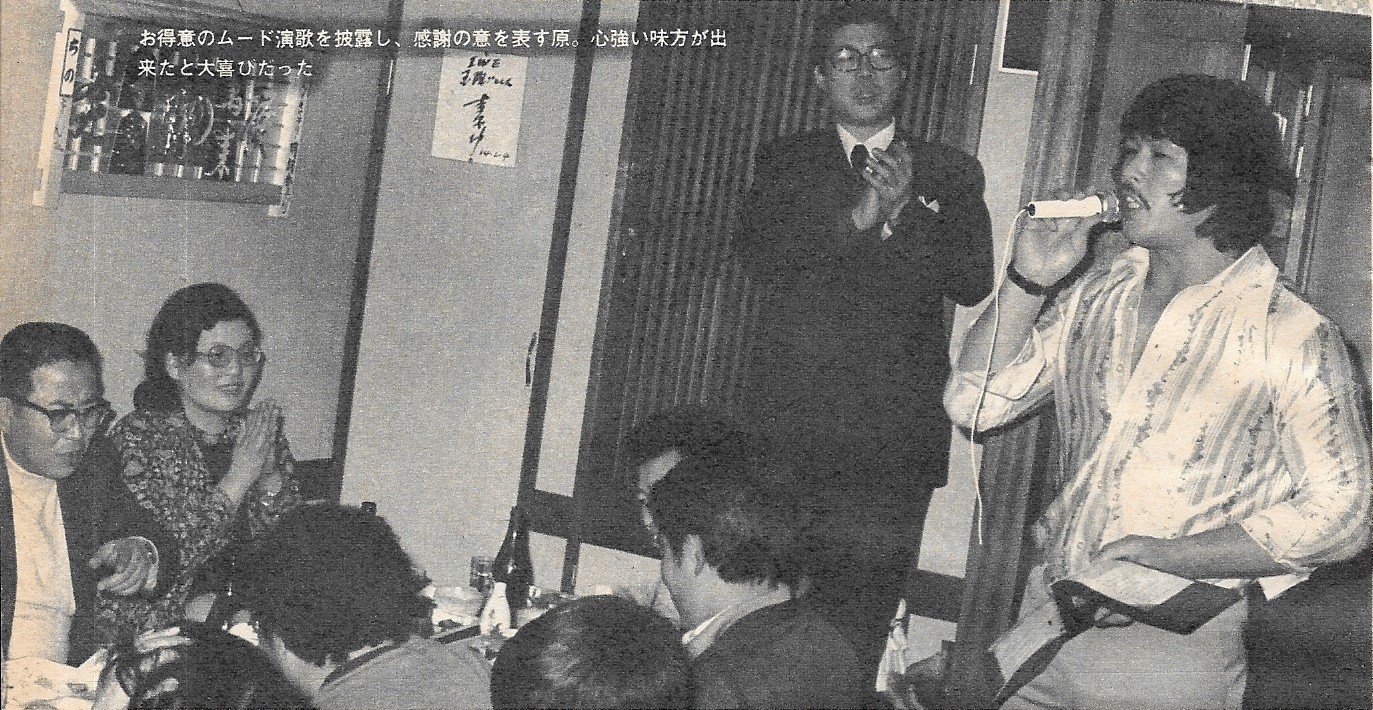
.thumb.jpg.03c9dd48289bd07a4dc84ec4f28d153e.jpg)
.thumb.jpg.91b348dbfd246aaecbf9b630ac5dc18b.jpg)
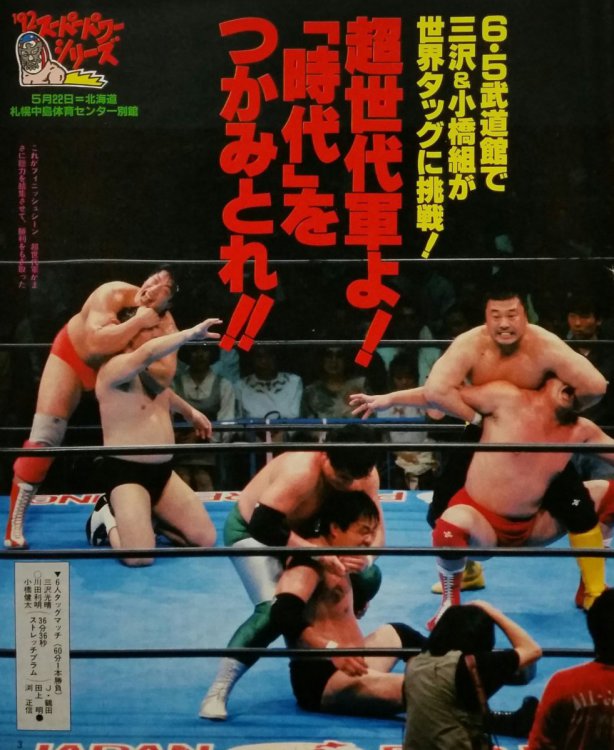
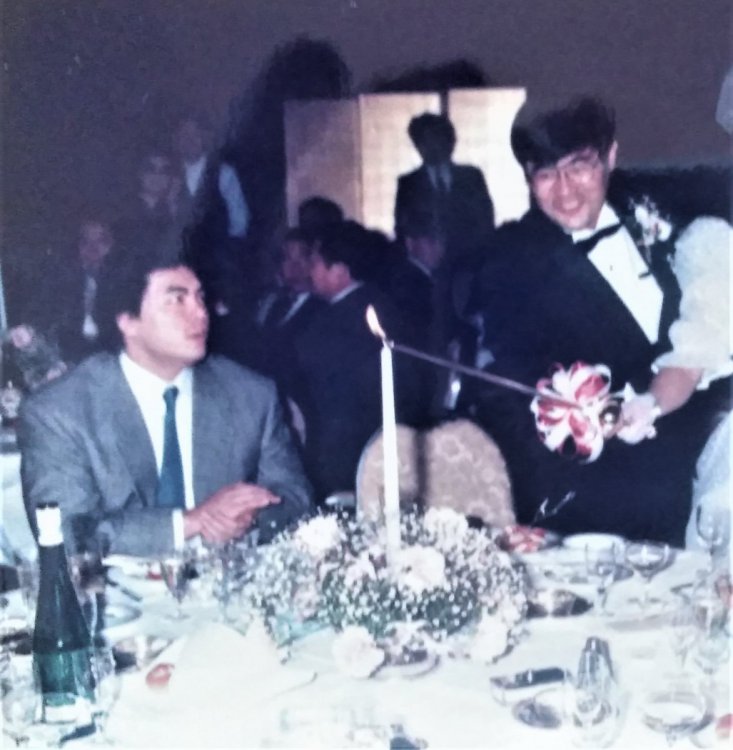
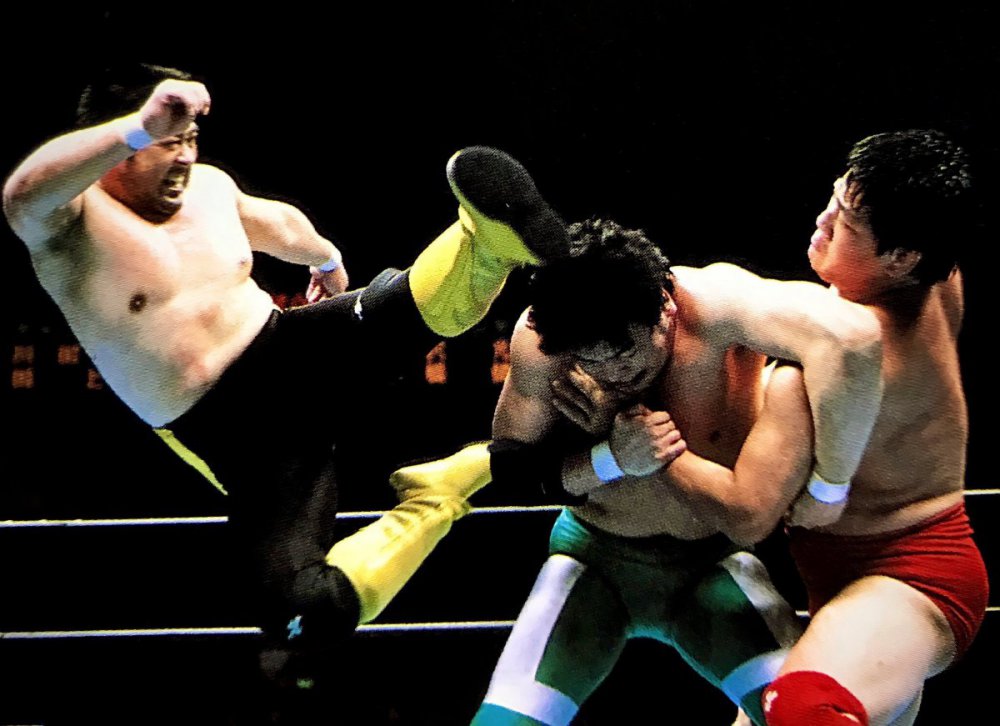
.thumb.jpg.1c02b43a1ce8ec79086c1fdbdc8d6669.jpg)
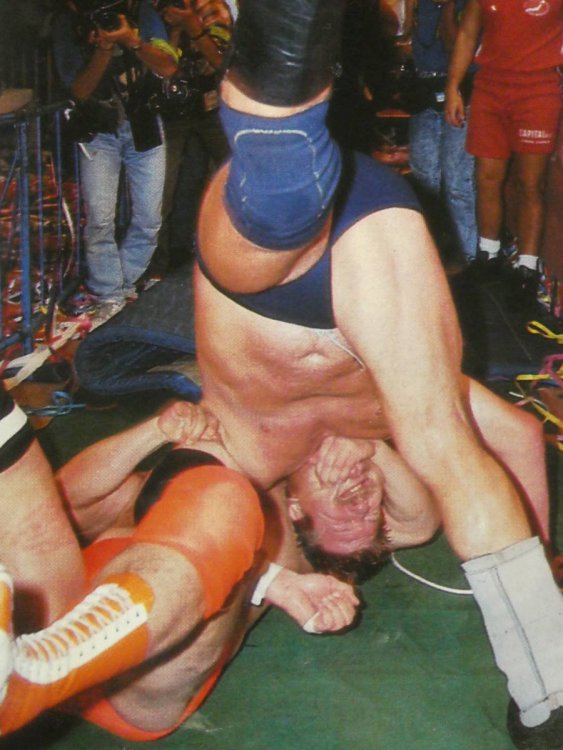








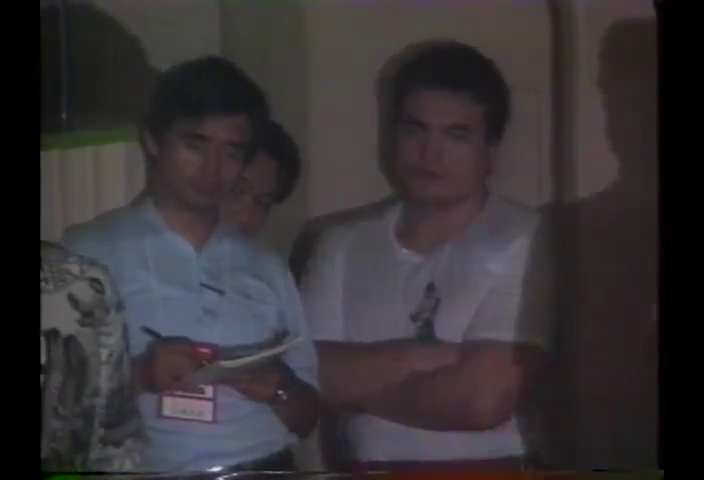
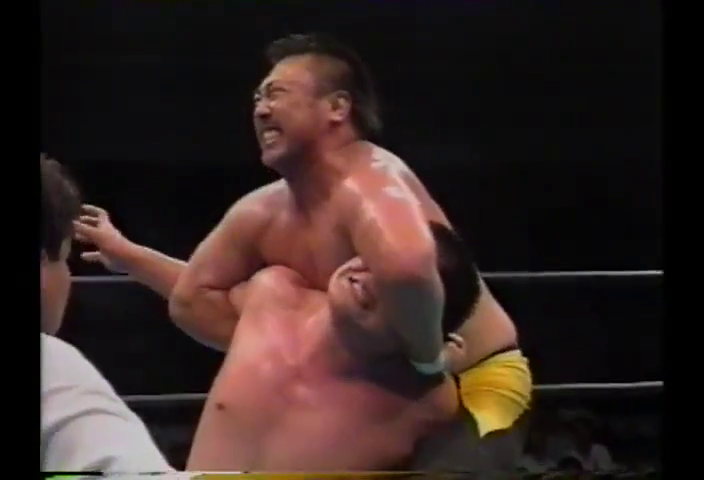

.thumb.jpg.6b1ef406c380c4cab8cdda7fb917a4cc.jpg)
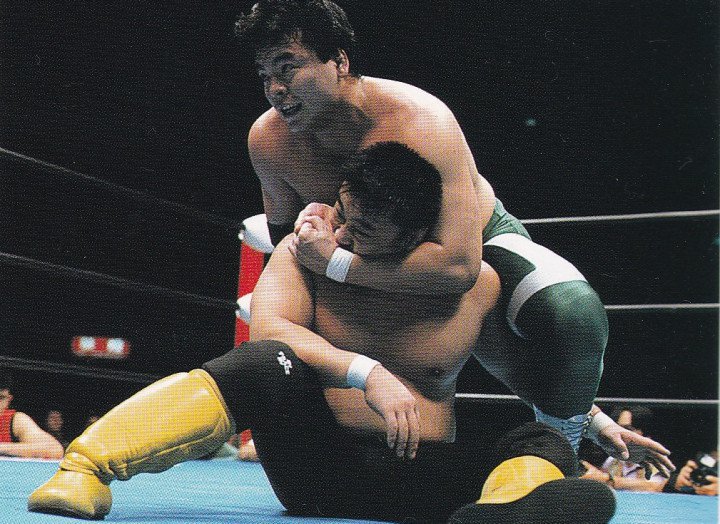



.thumb.jpg.8ae55e0ad9b822e2770ea52dd17f1956.jpg)

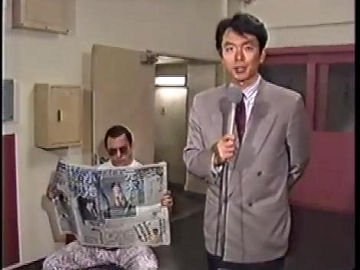
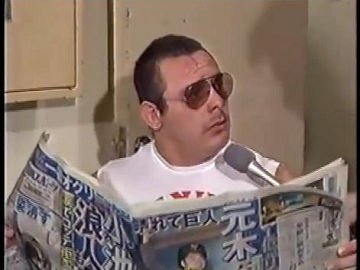
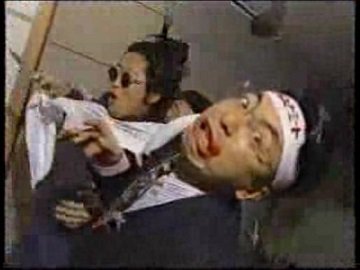
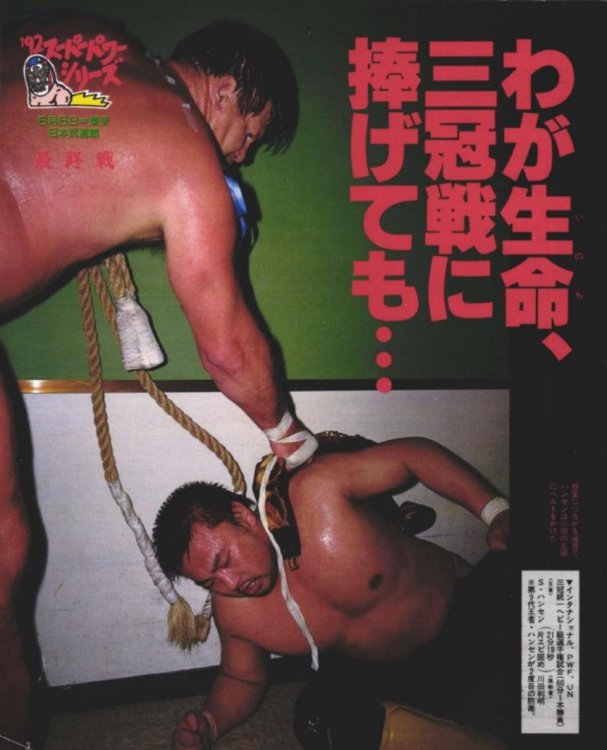
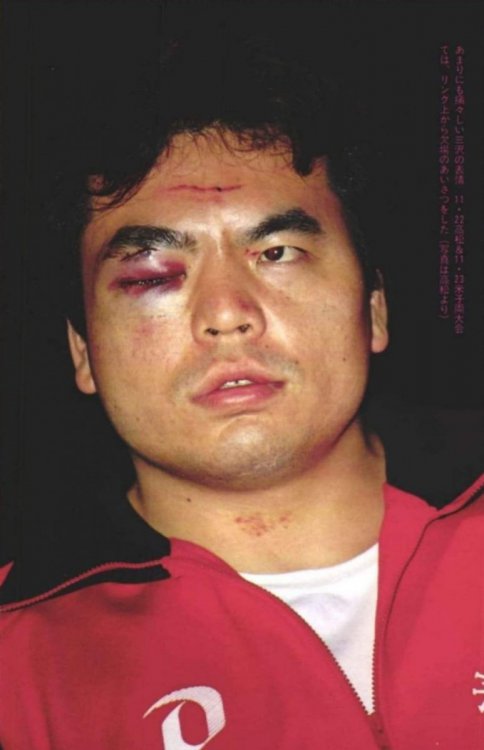
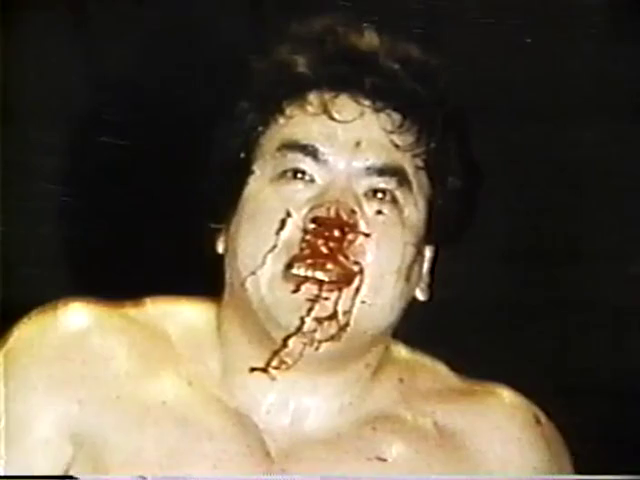
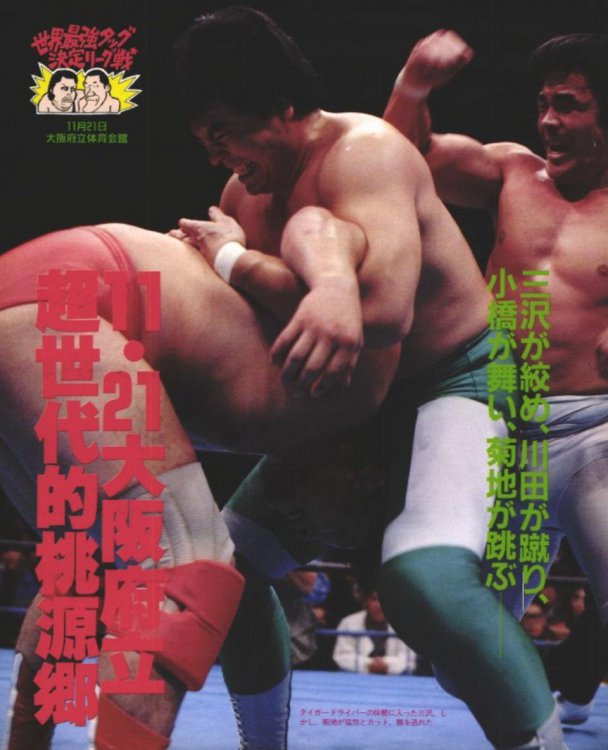
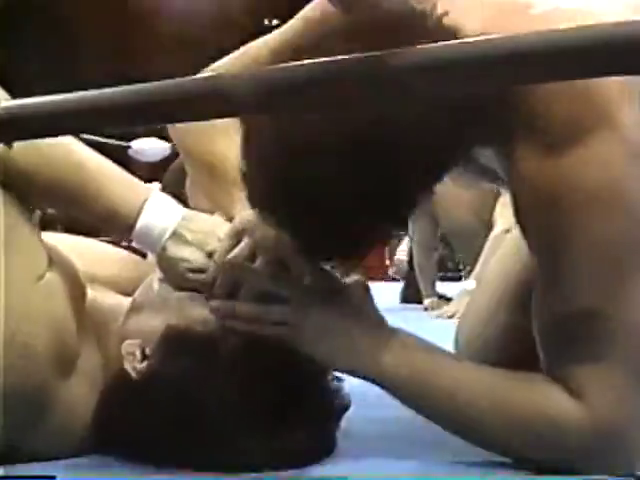
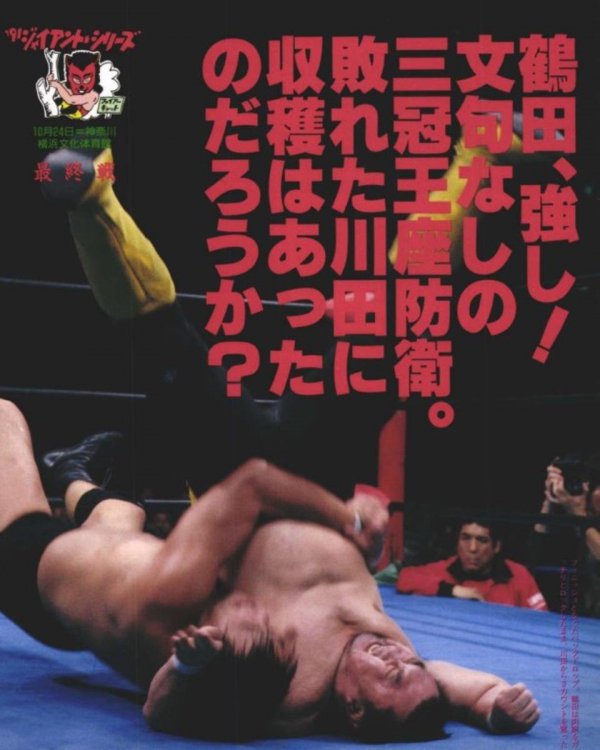
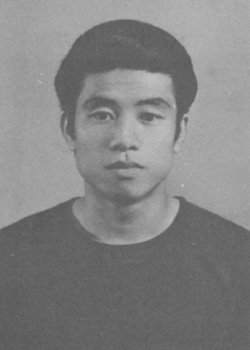
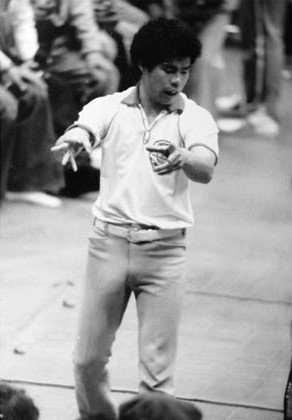
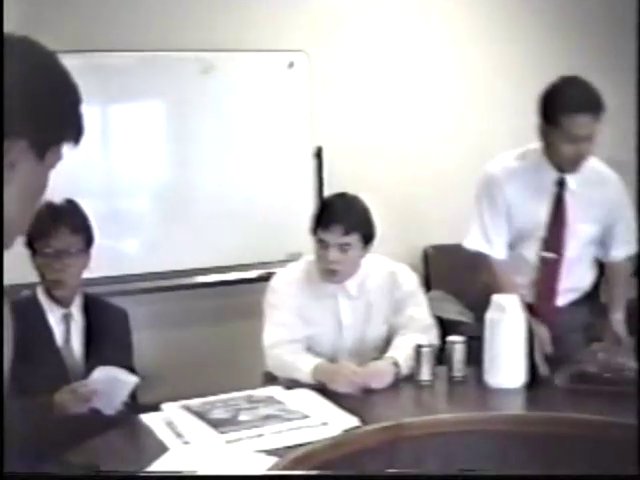
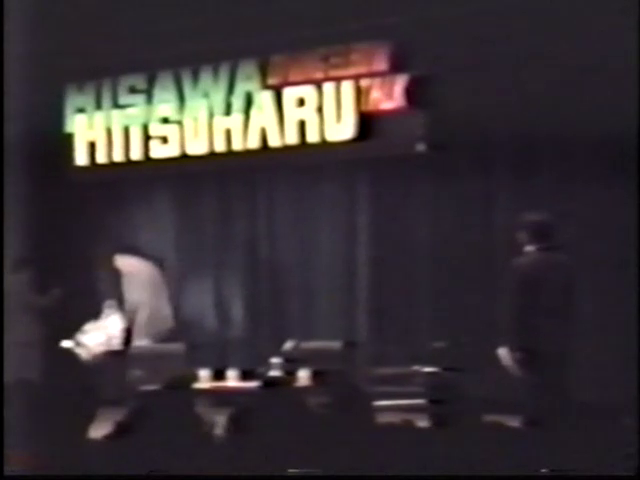
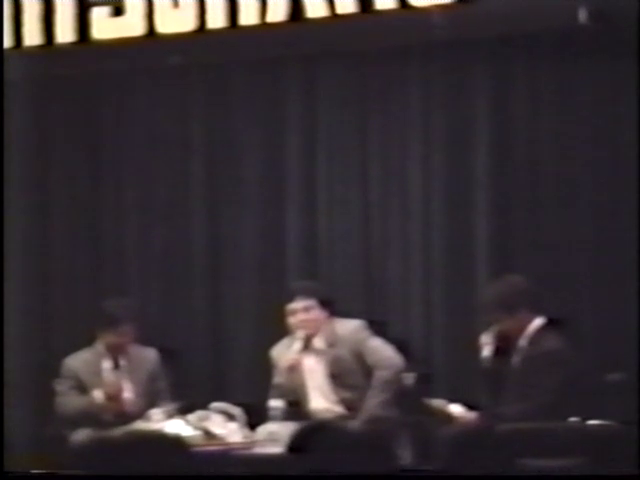
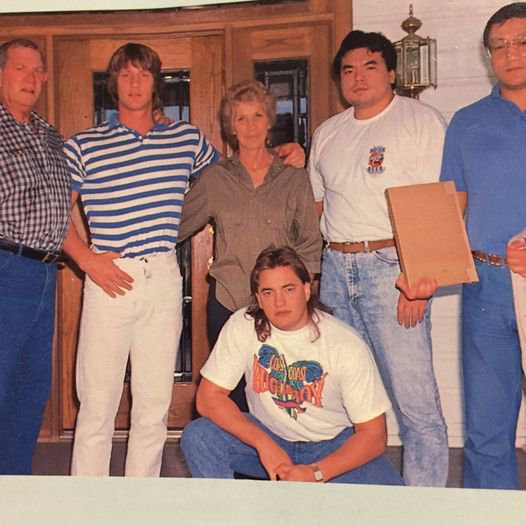
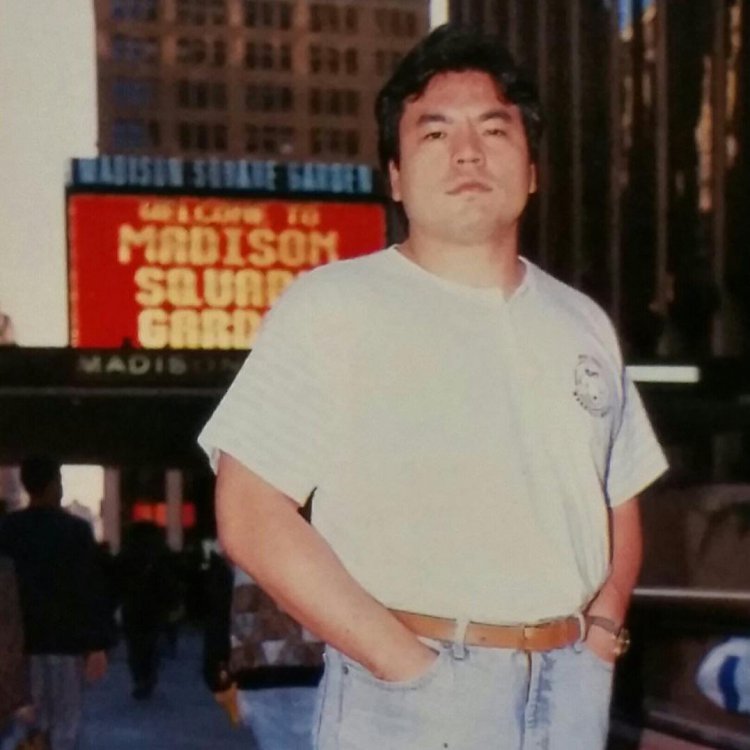
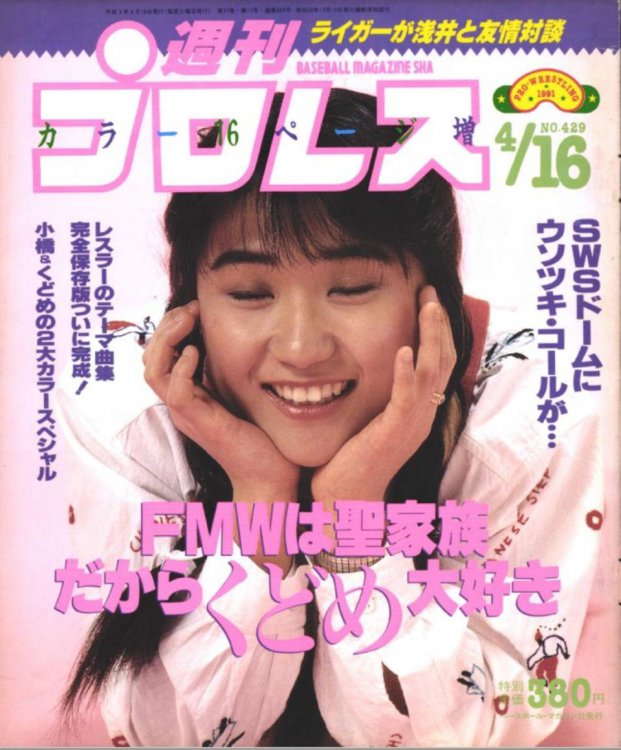
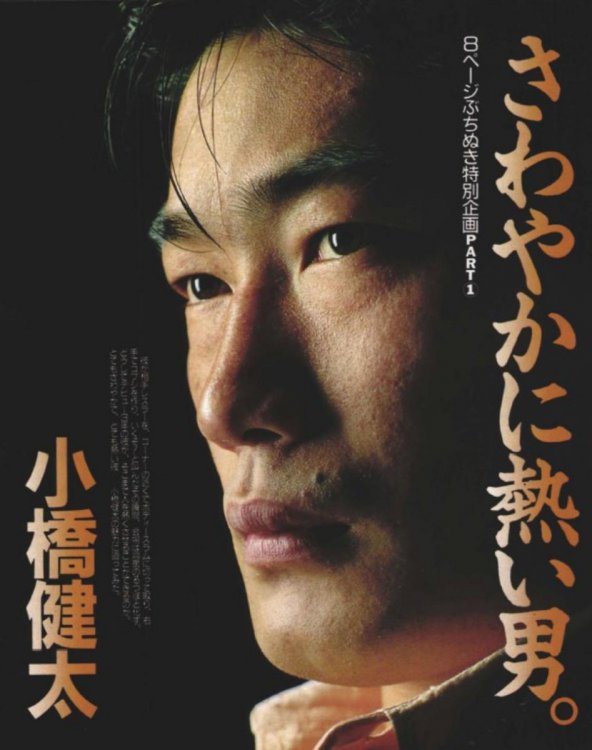
.thumb.jpg.23c09f9a219e5b48b1095e7a8bb635e0.jpg)
